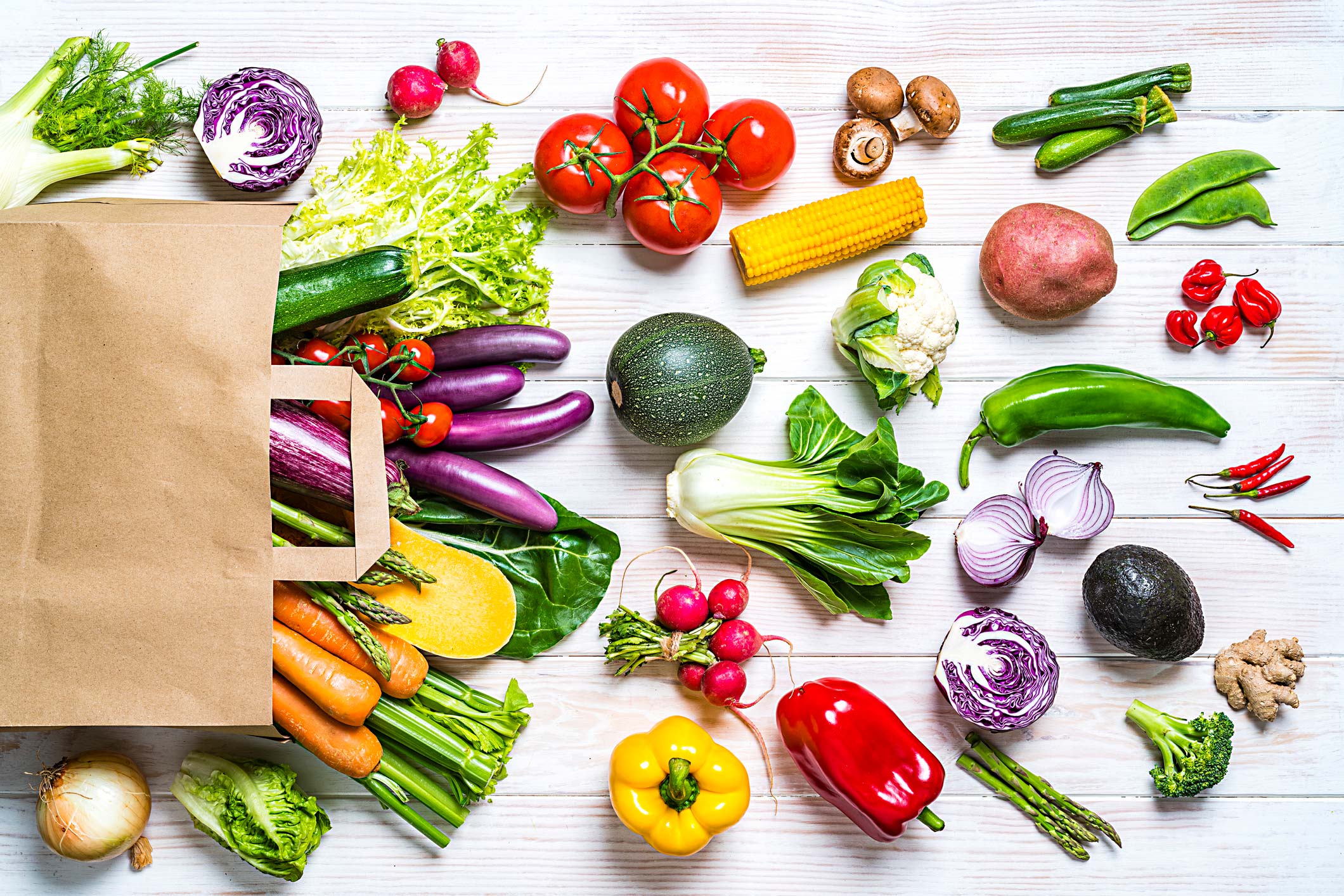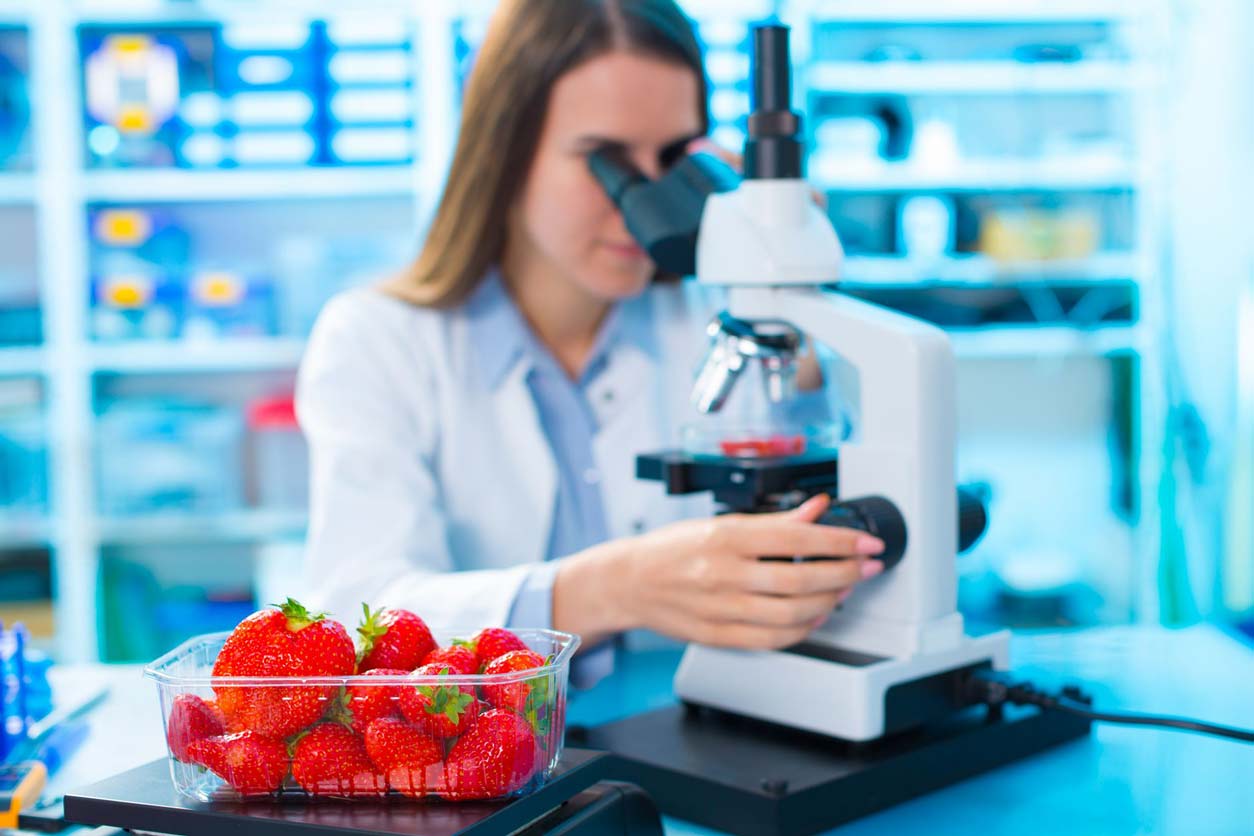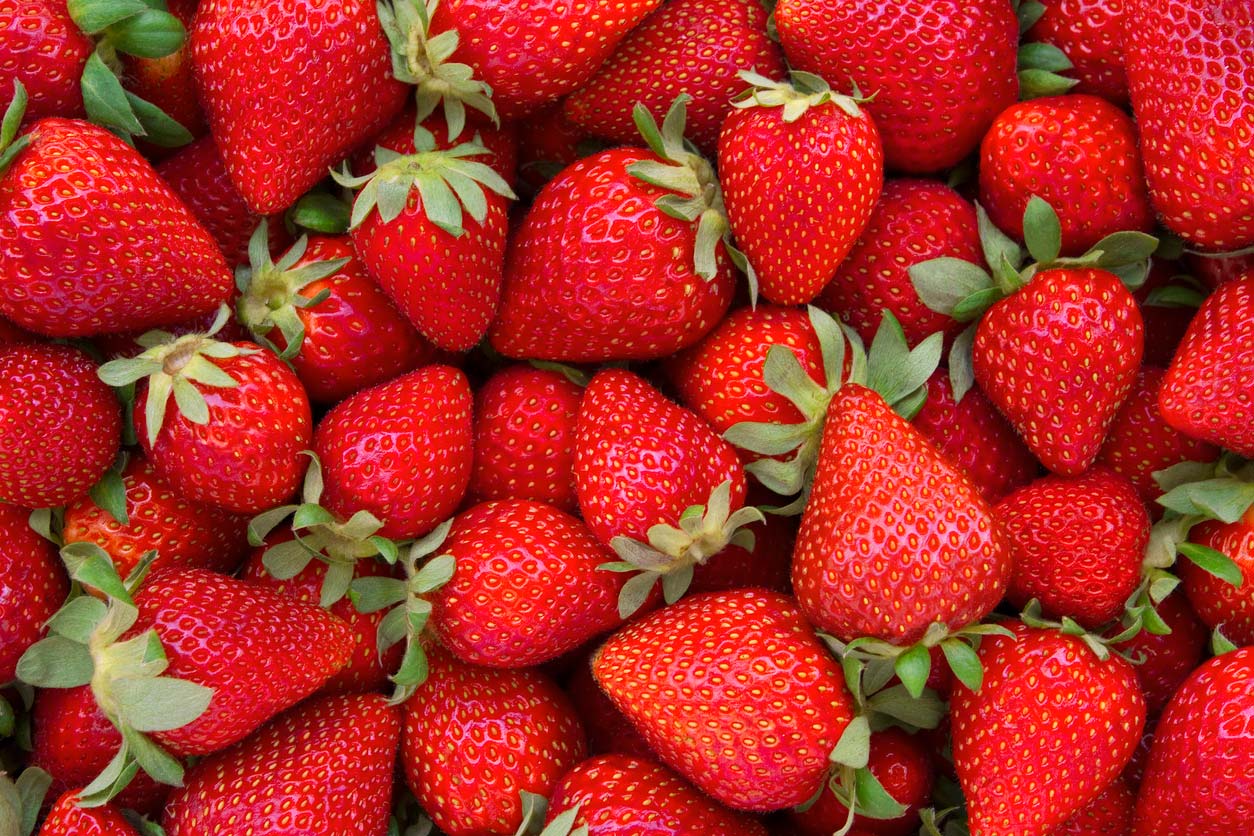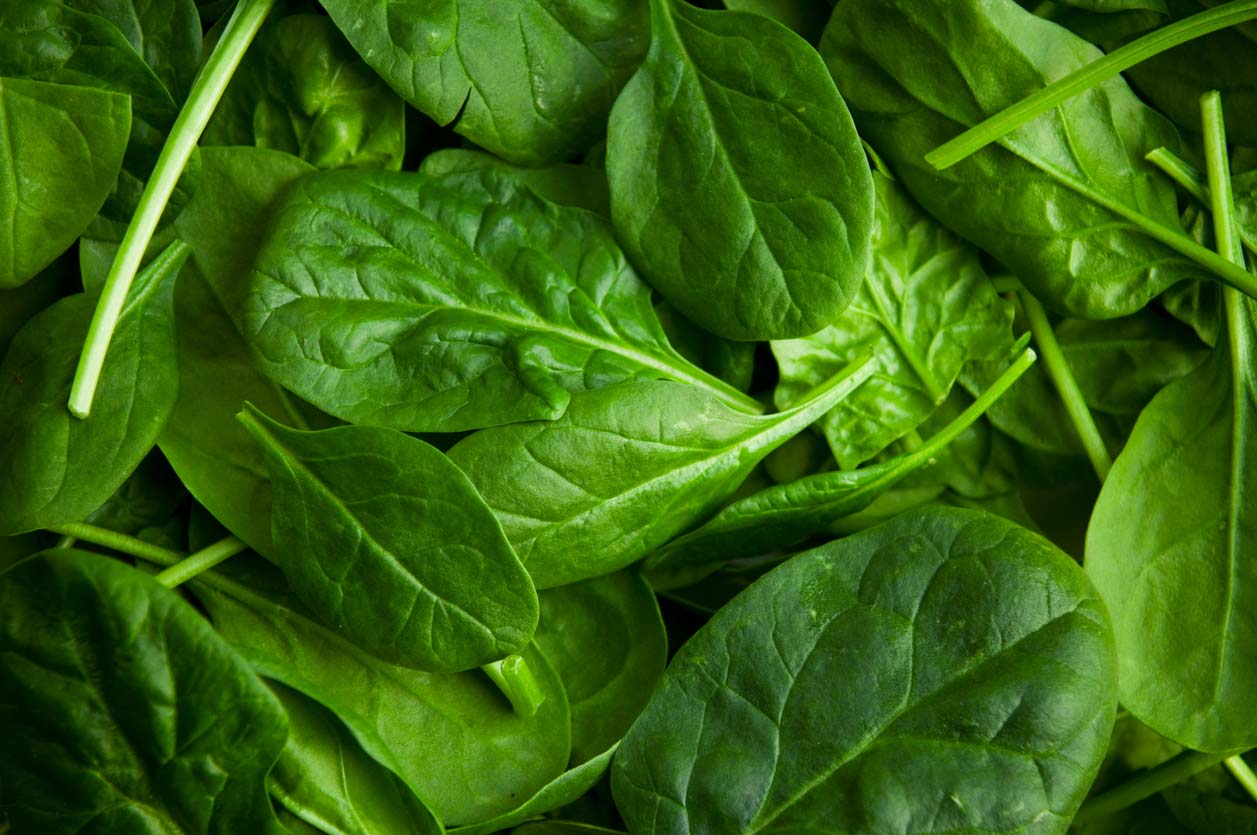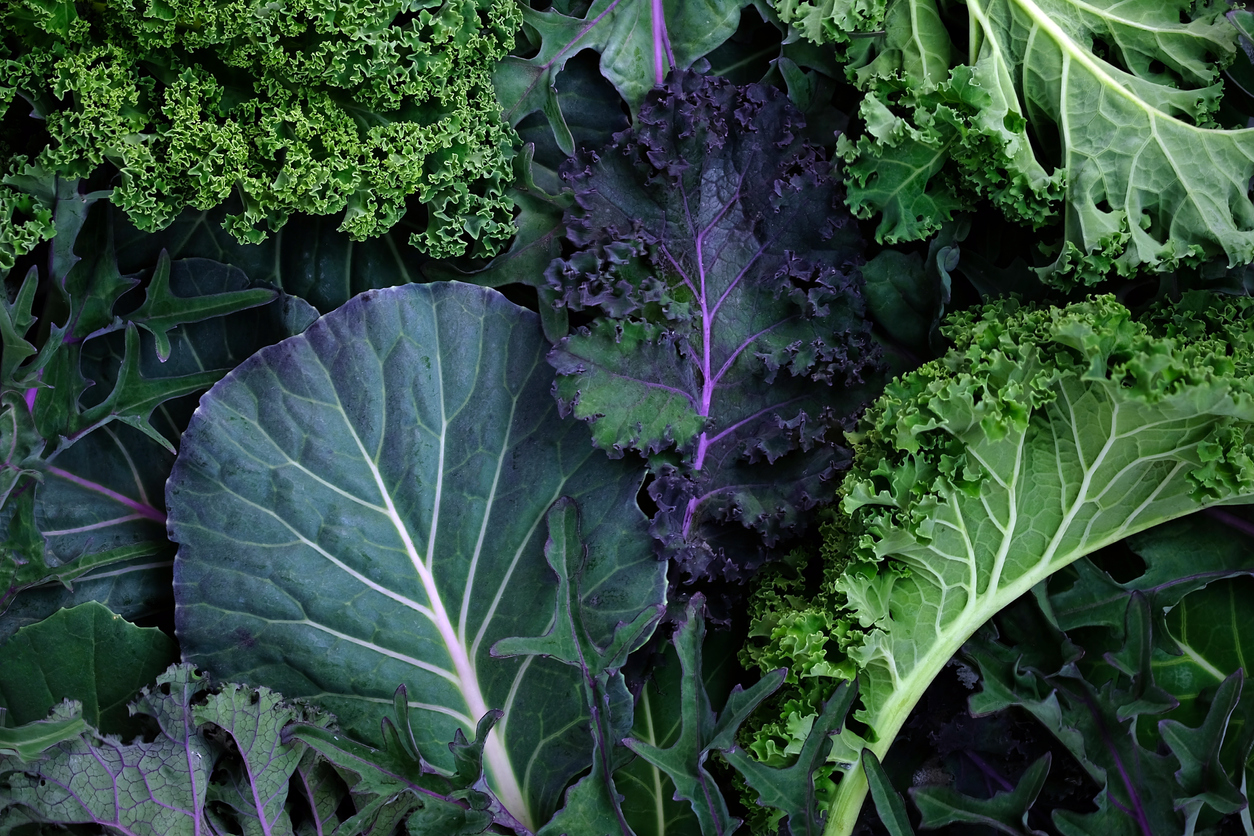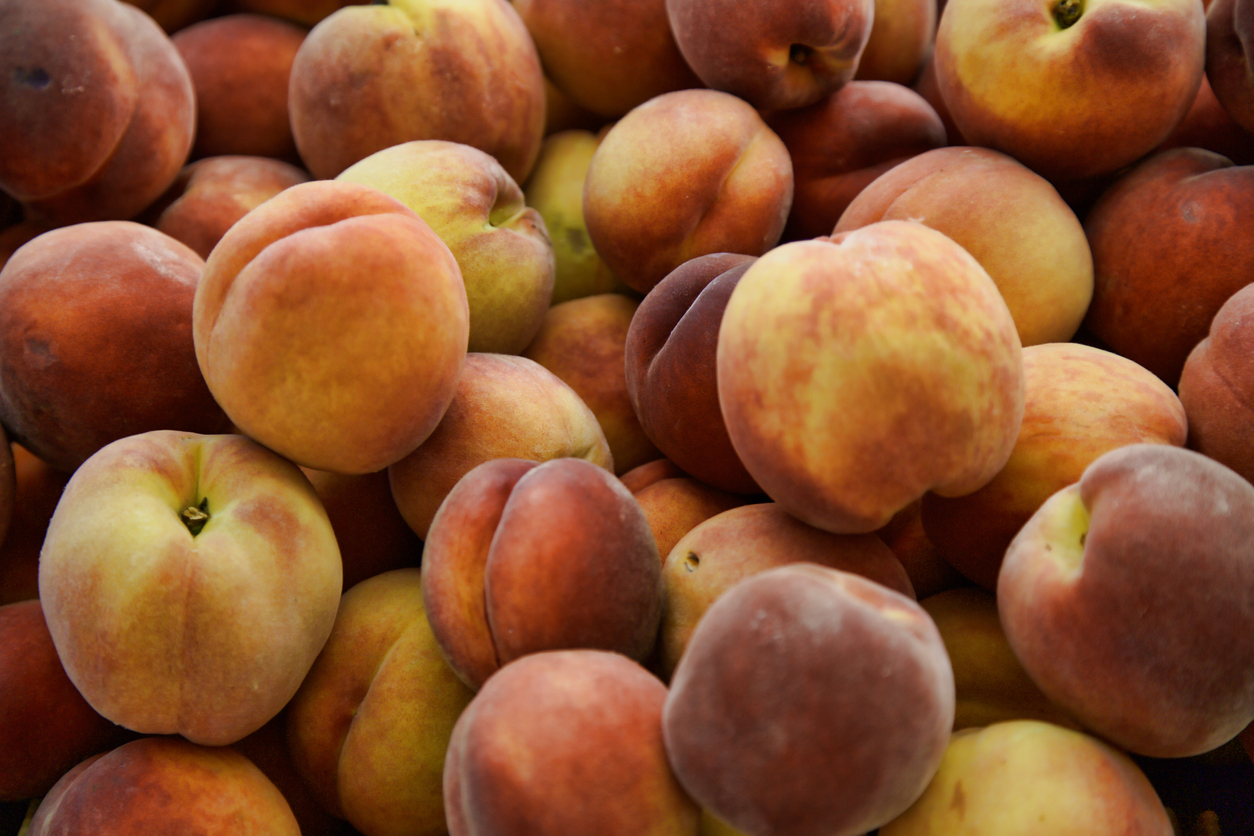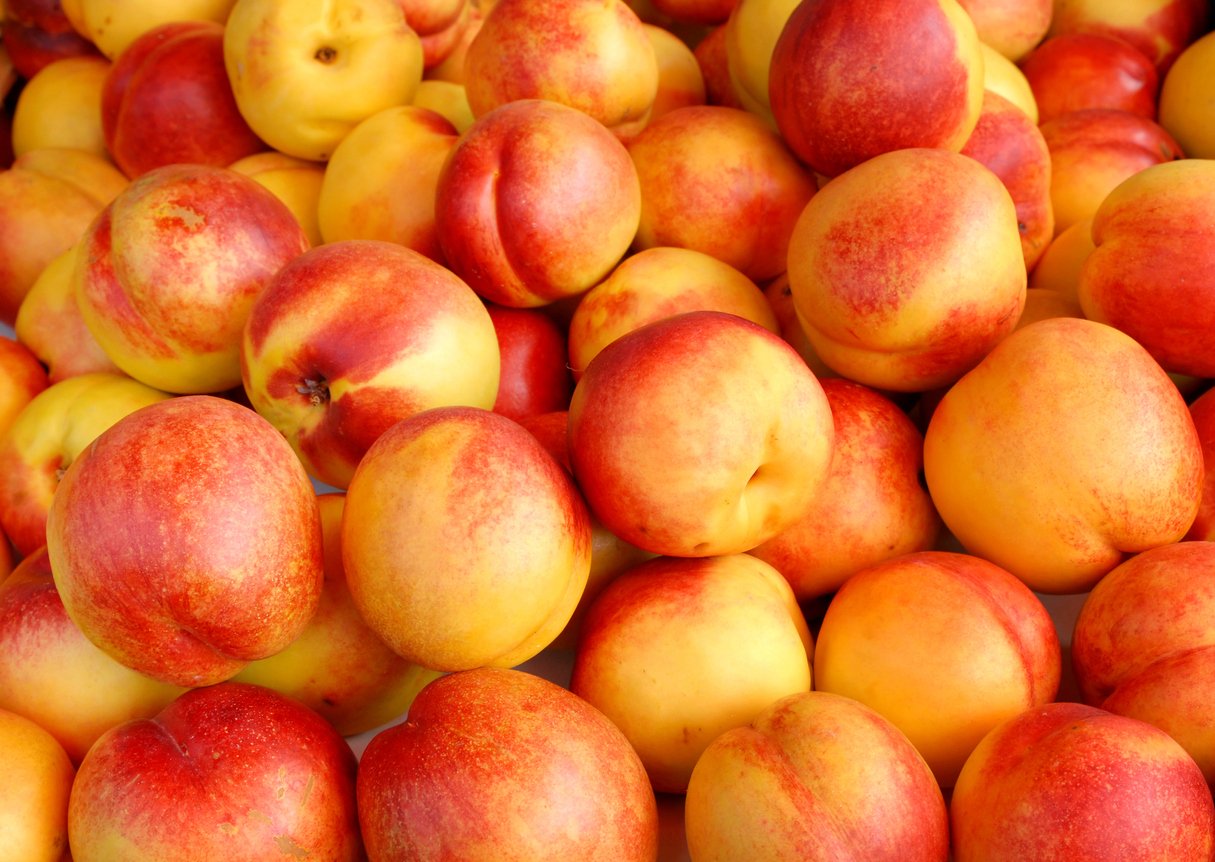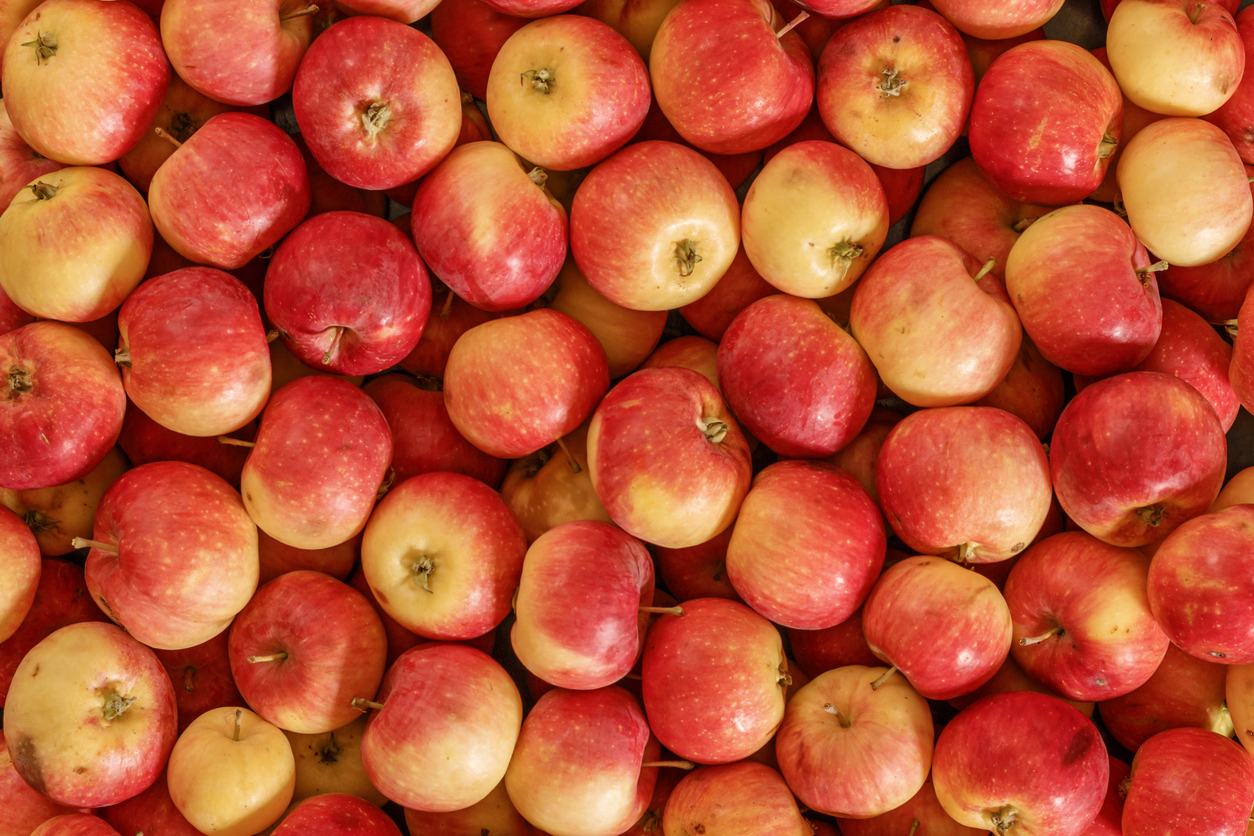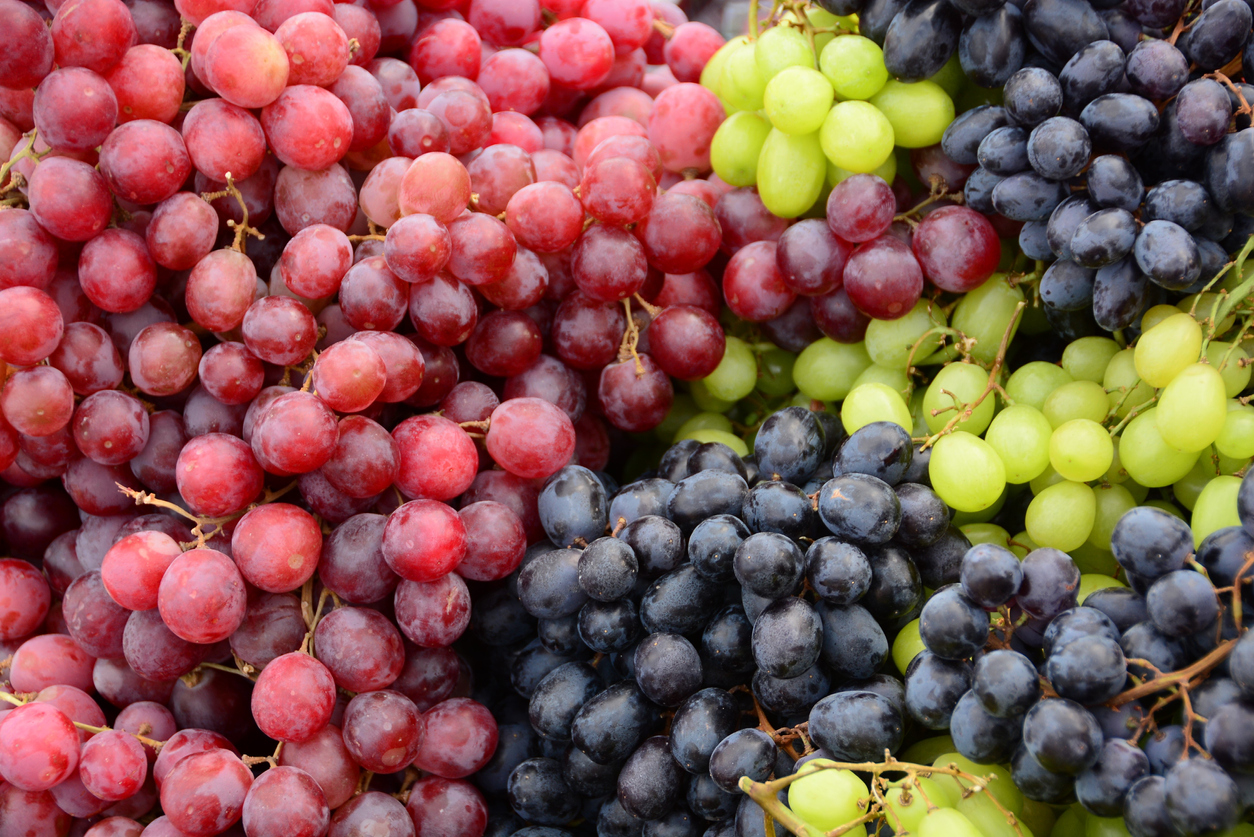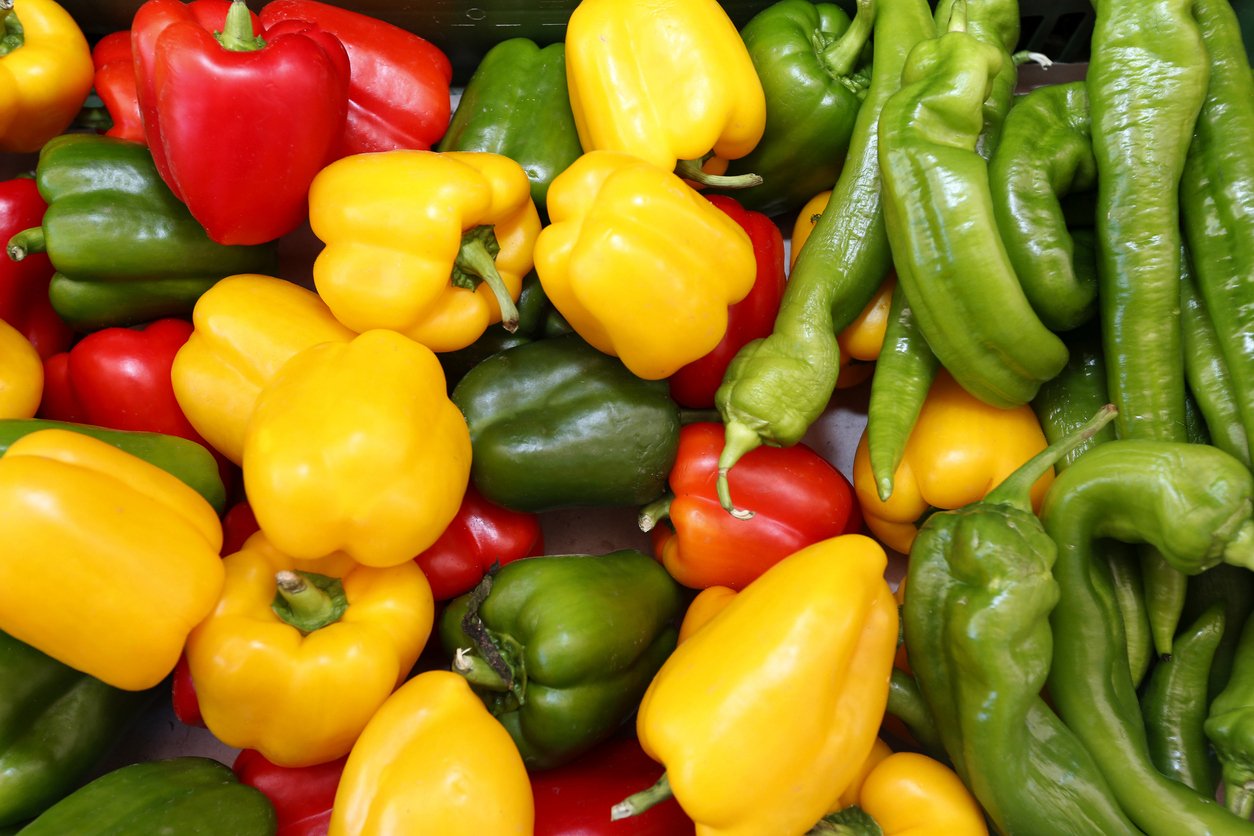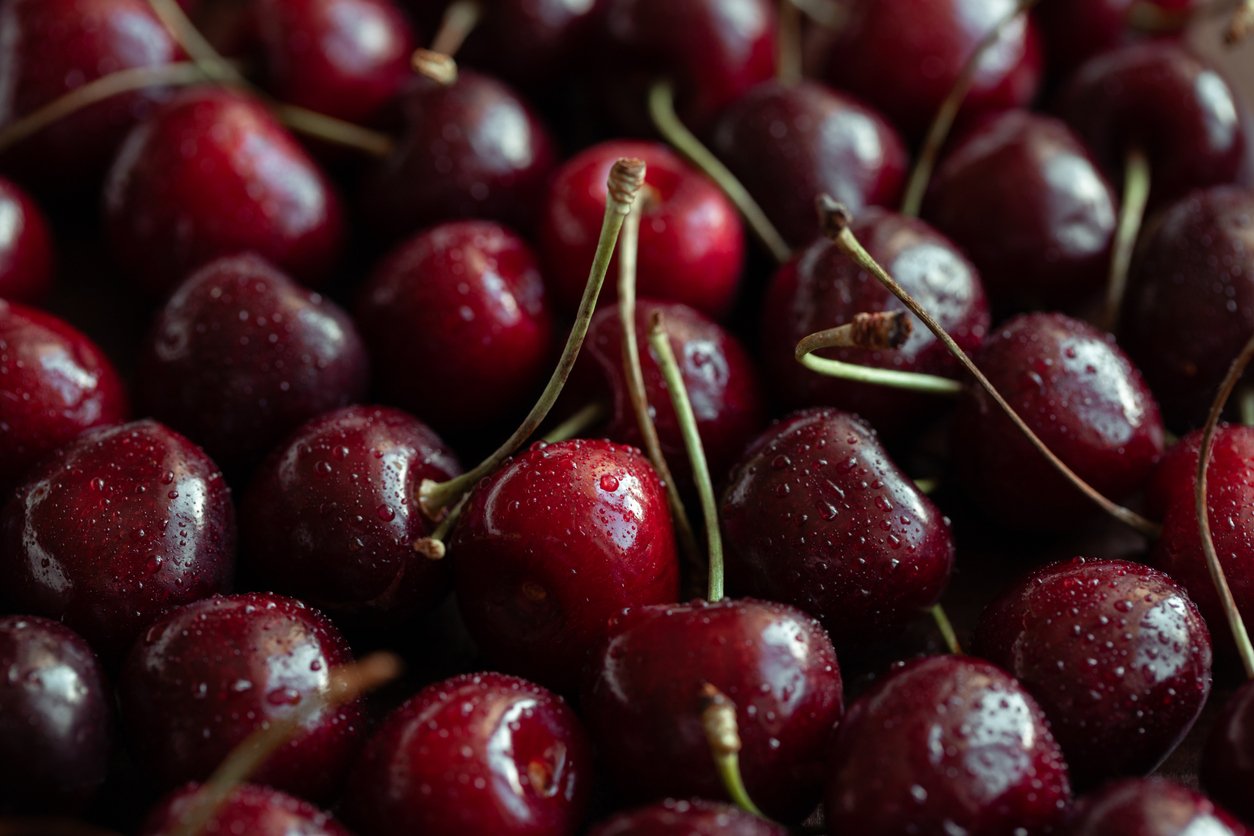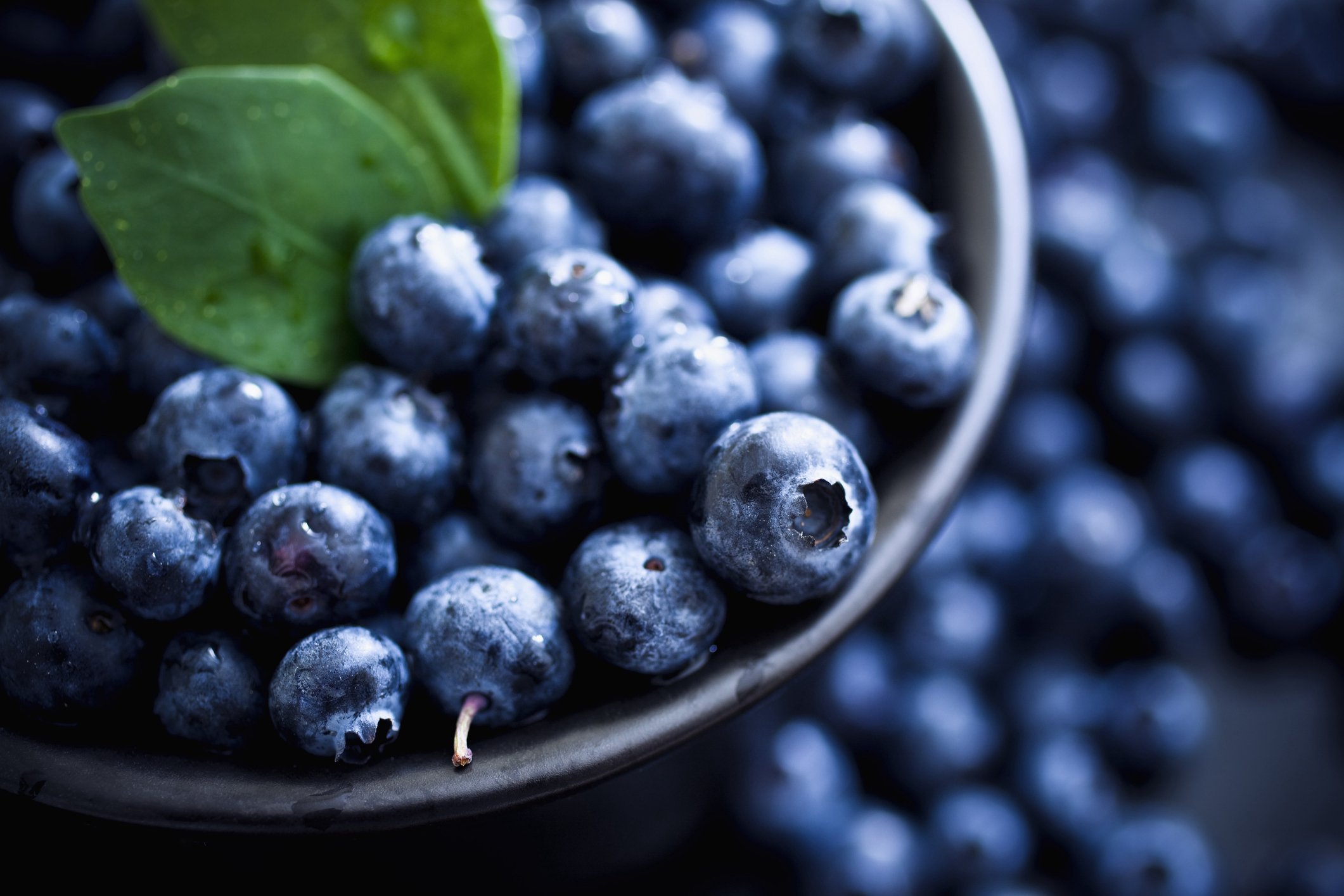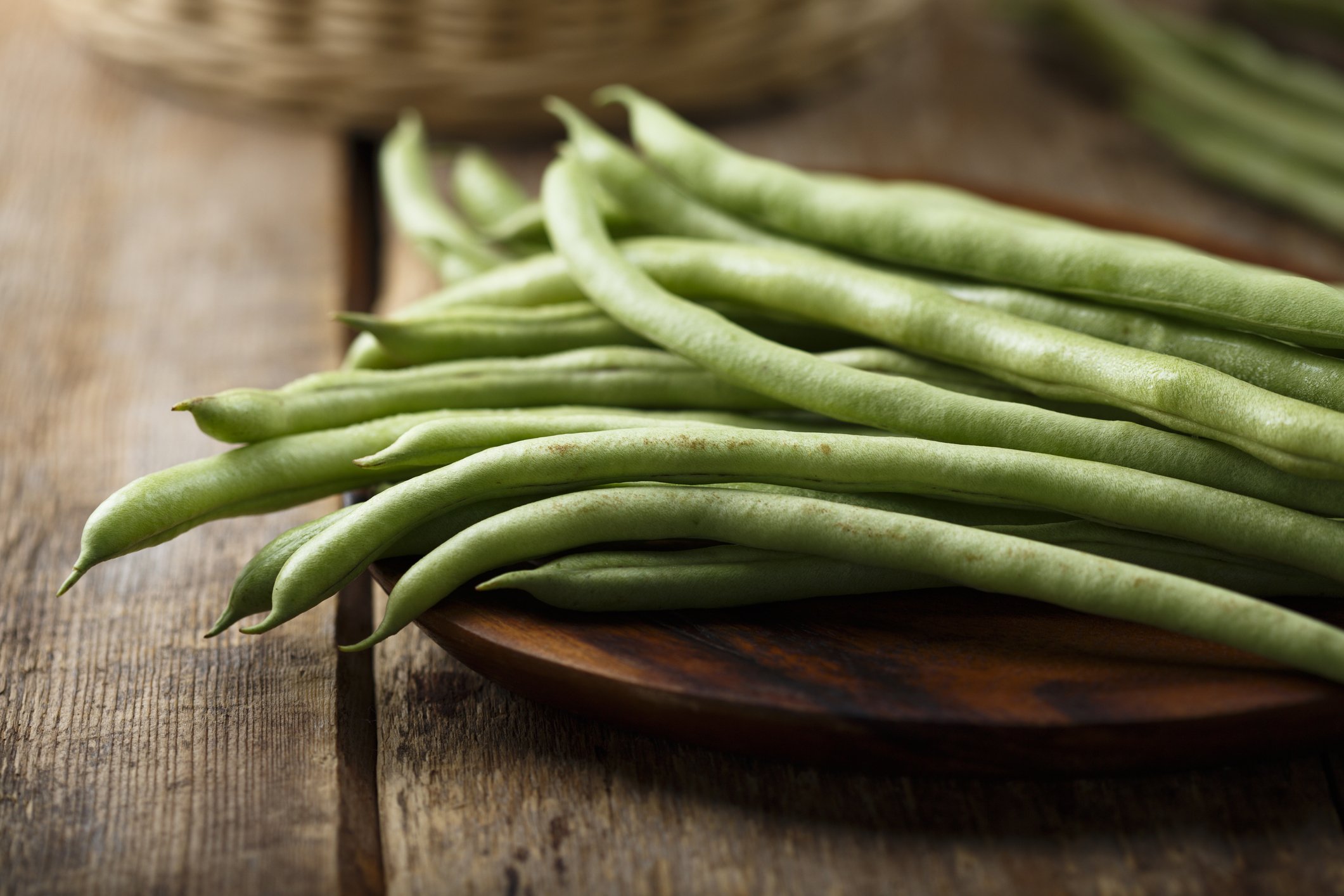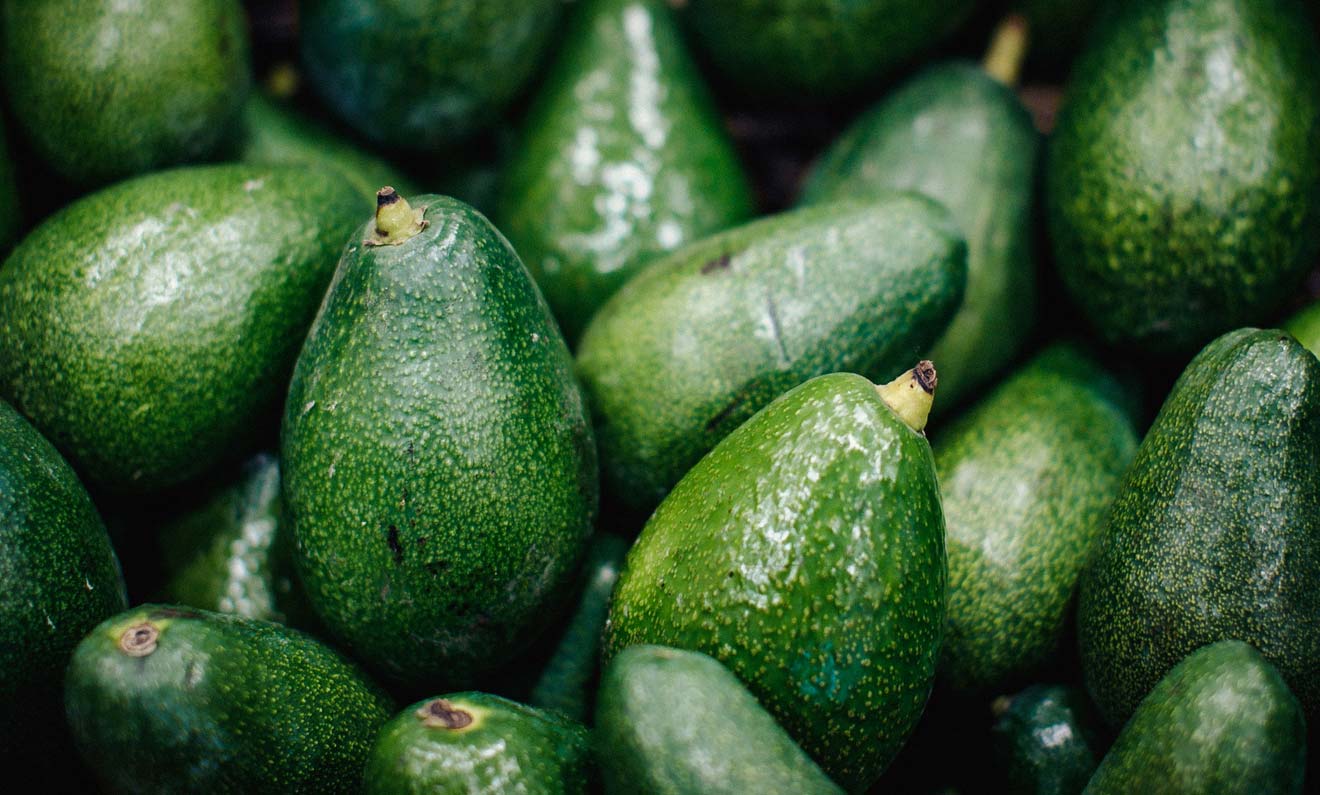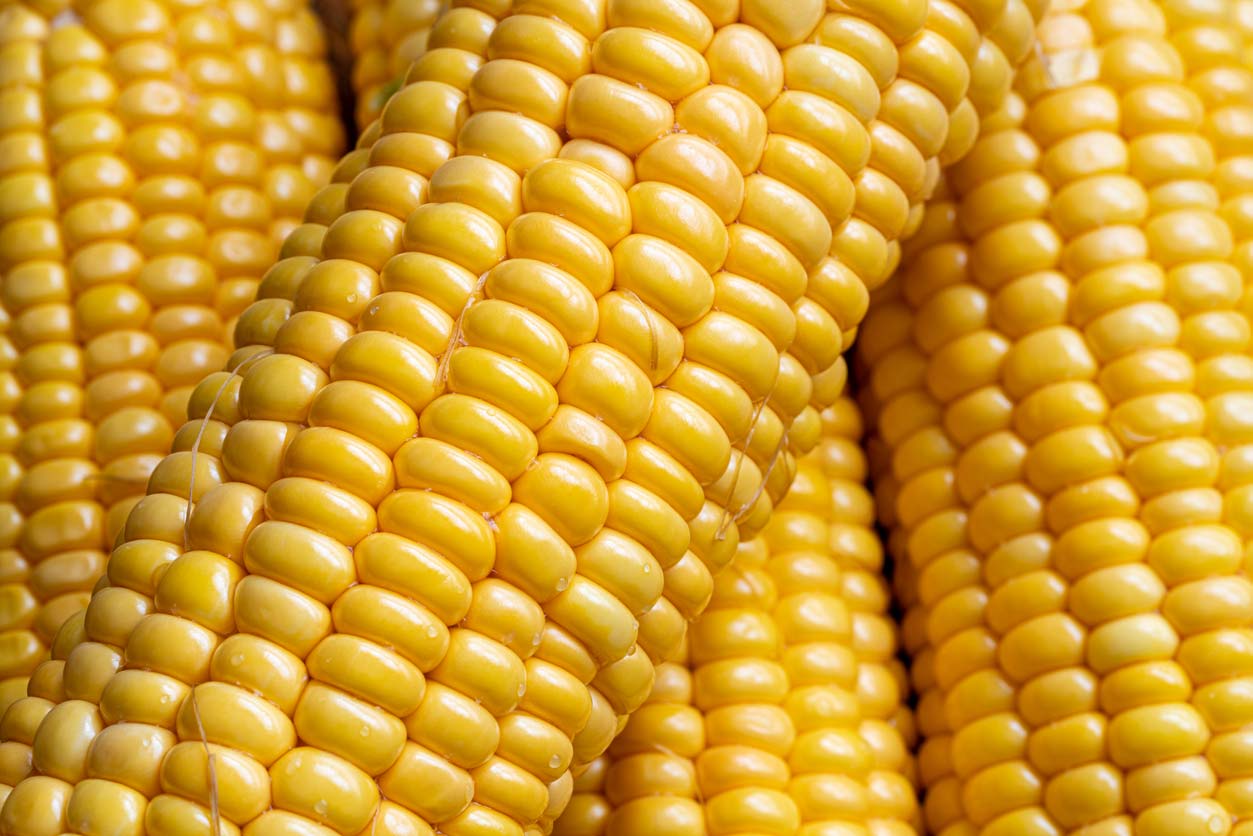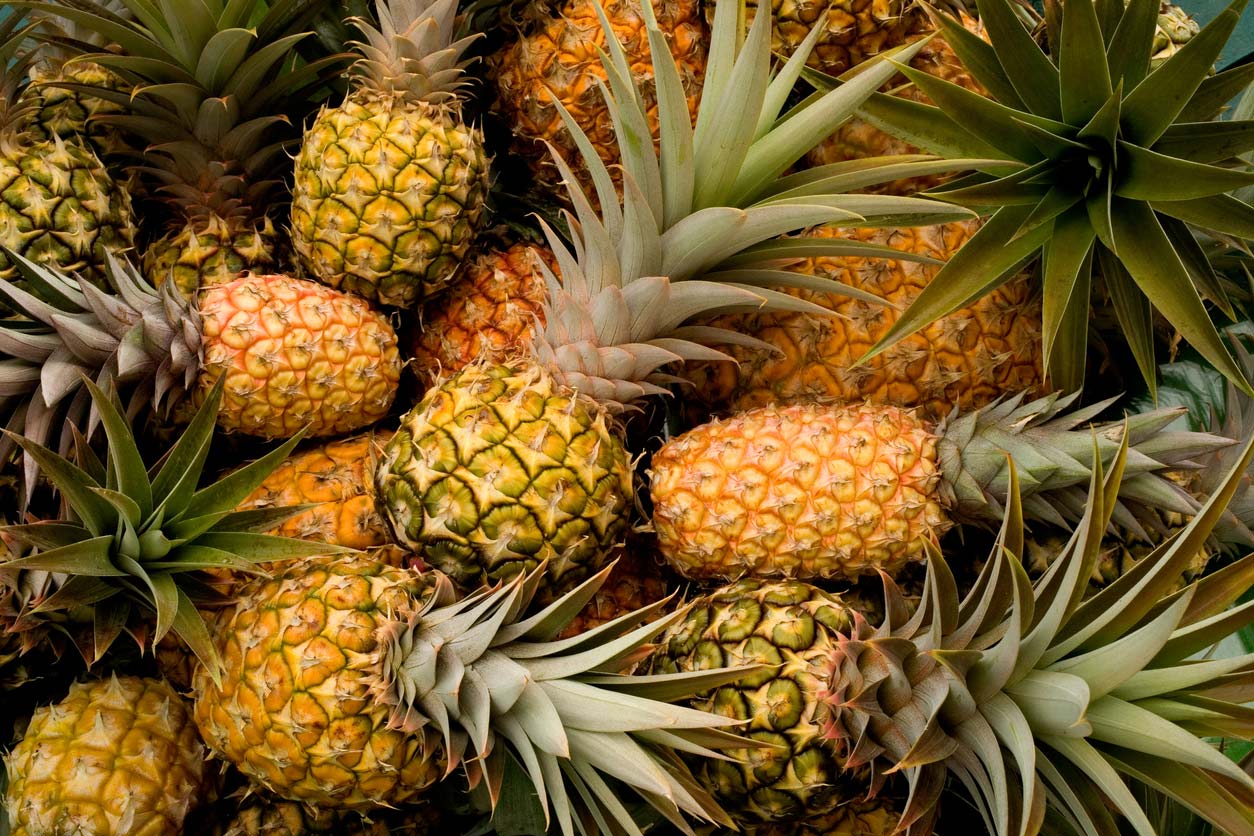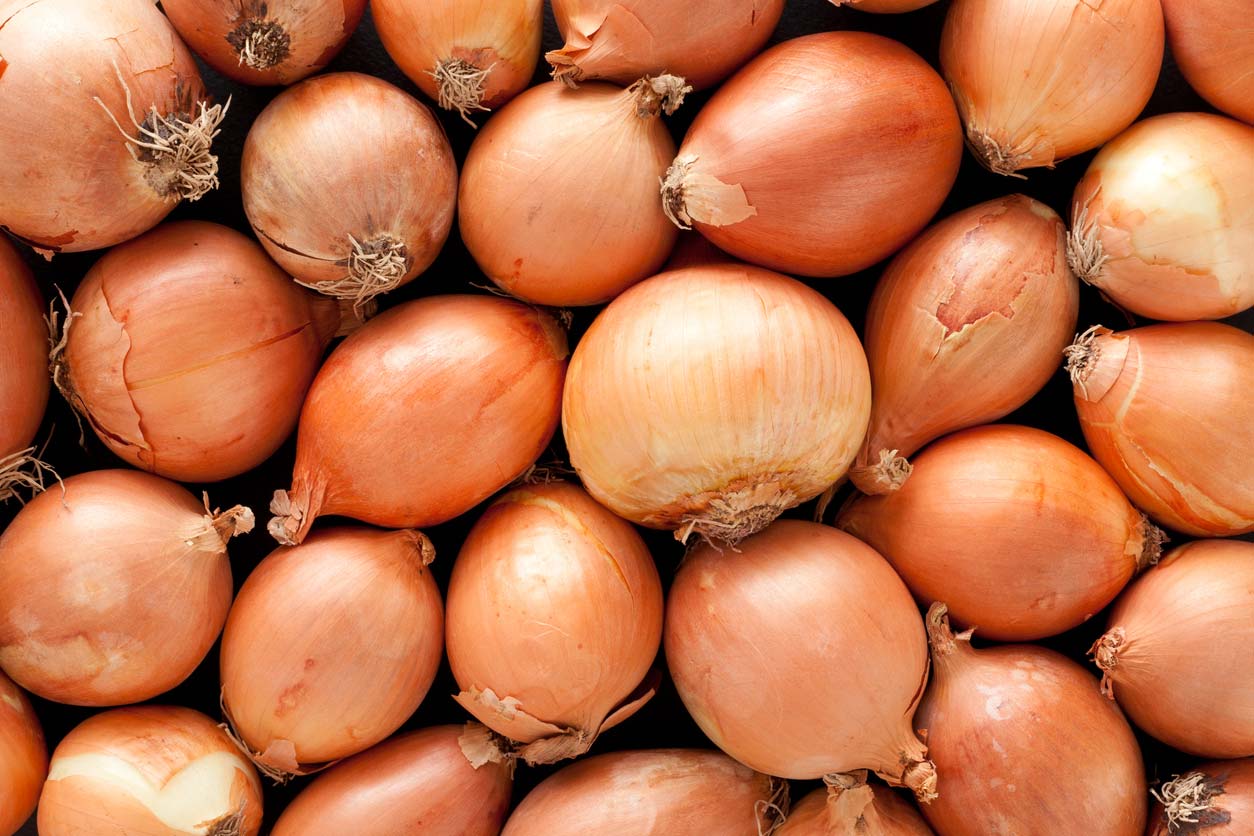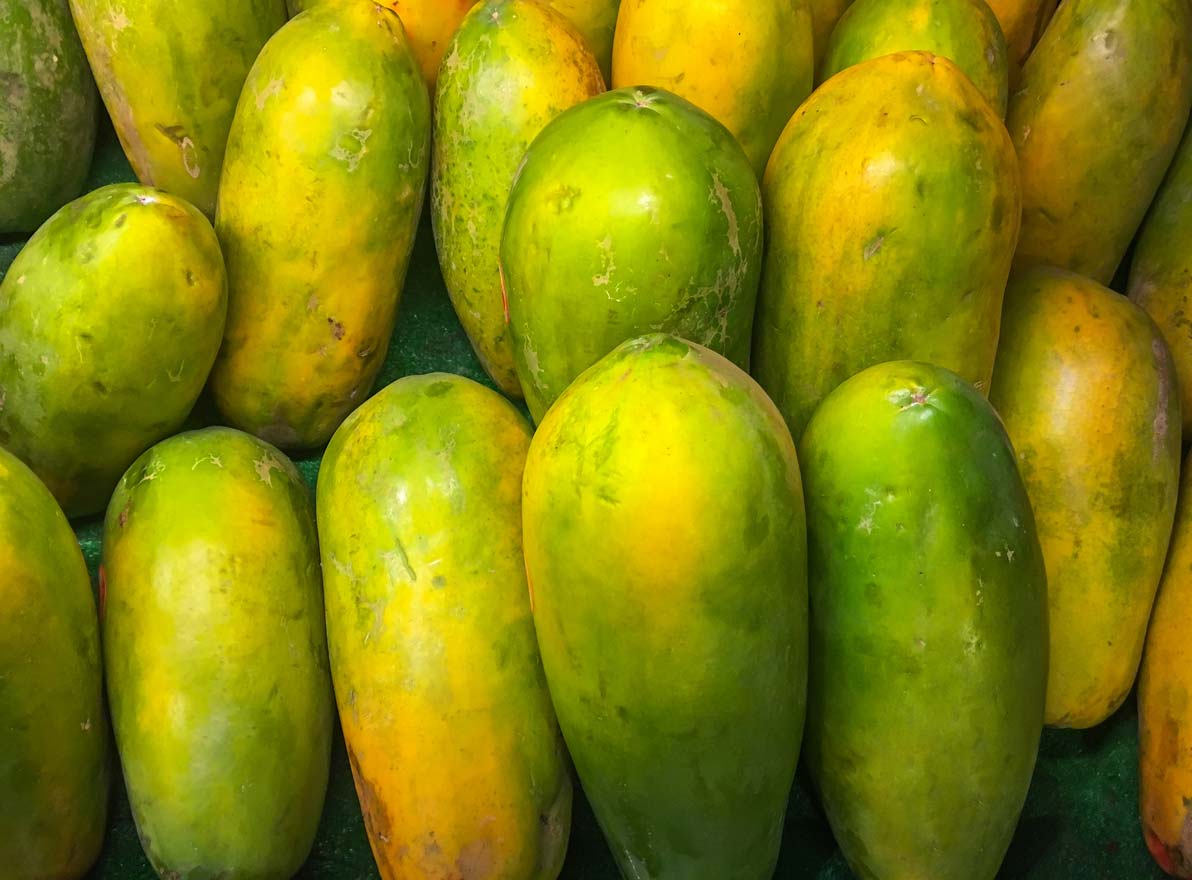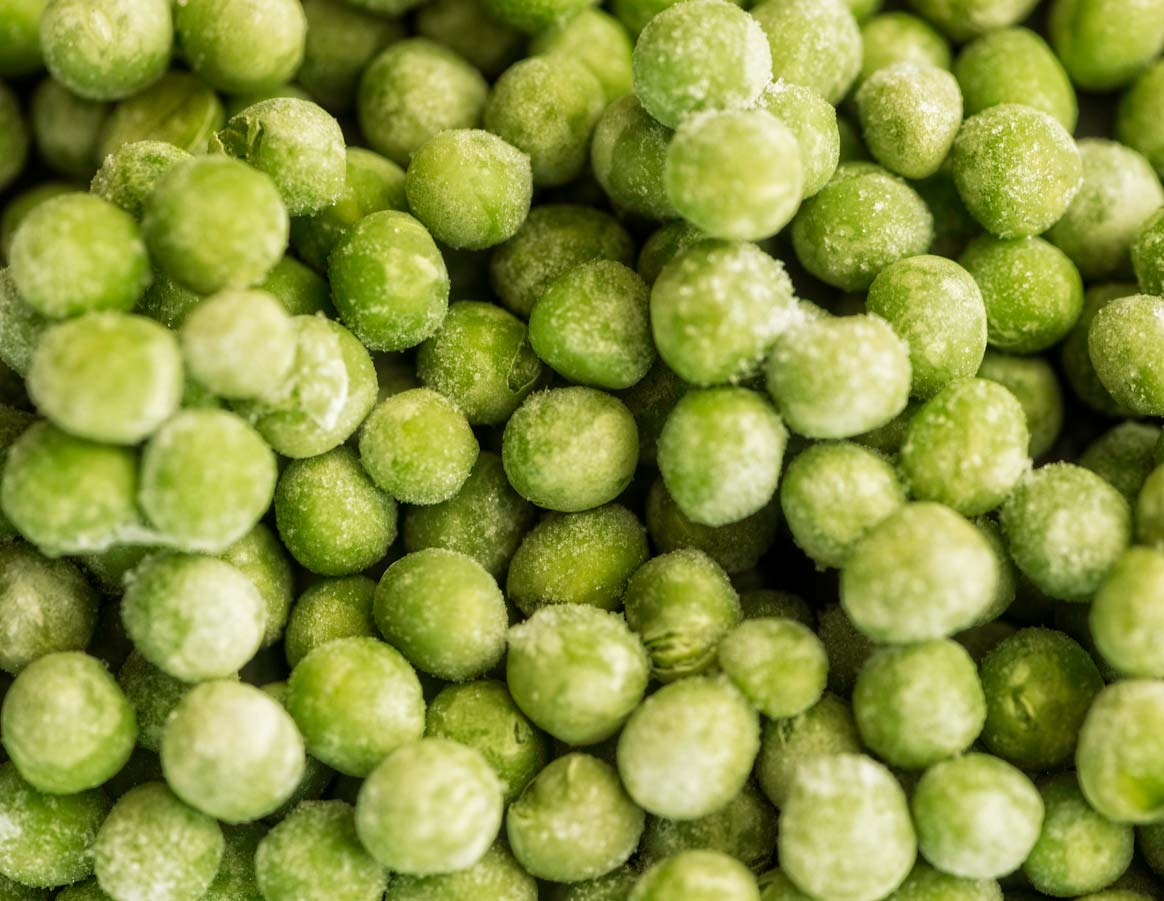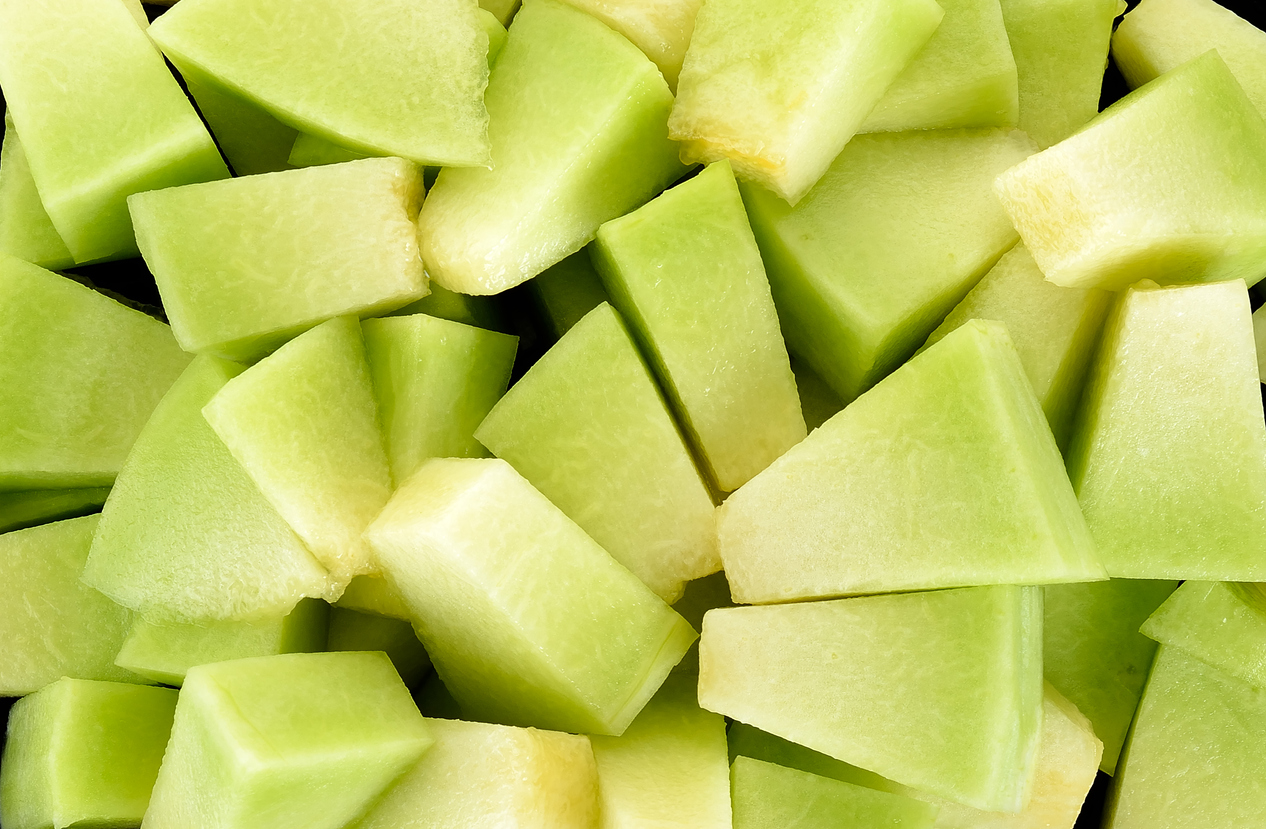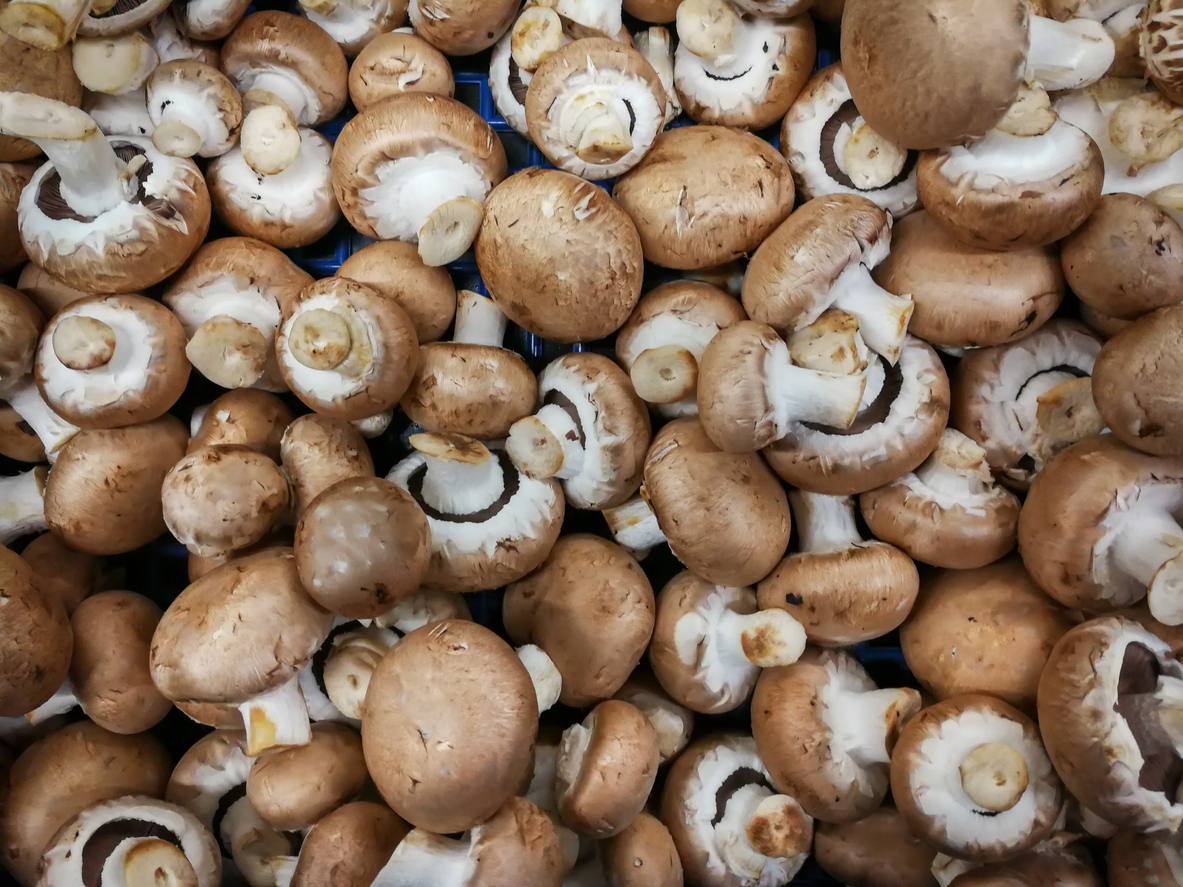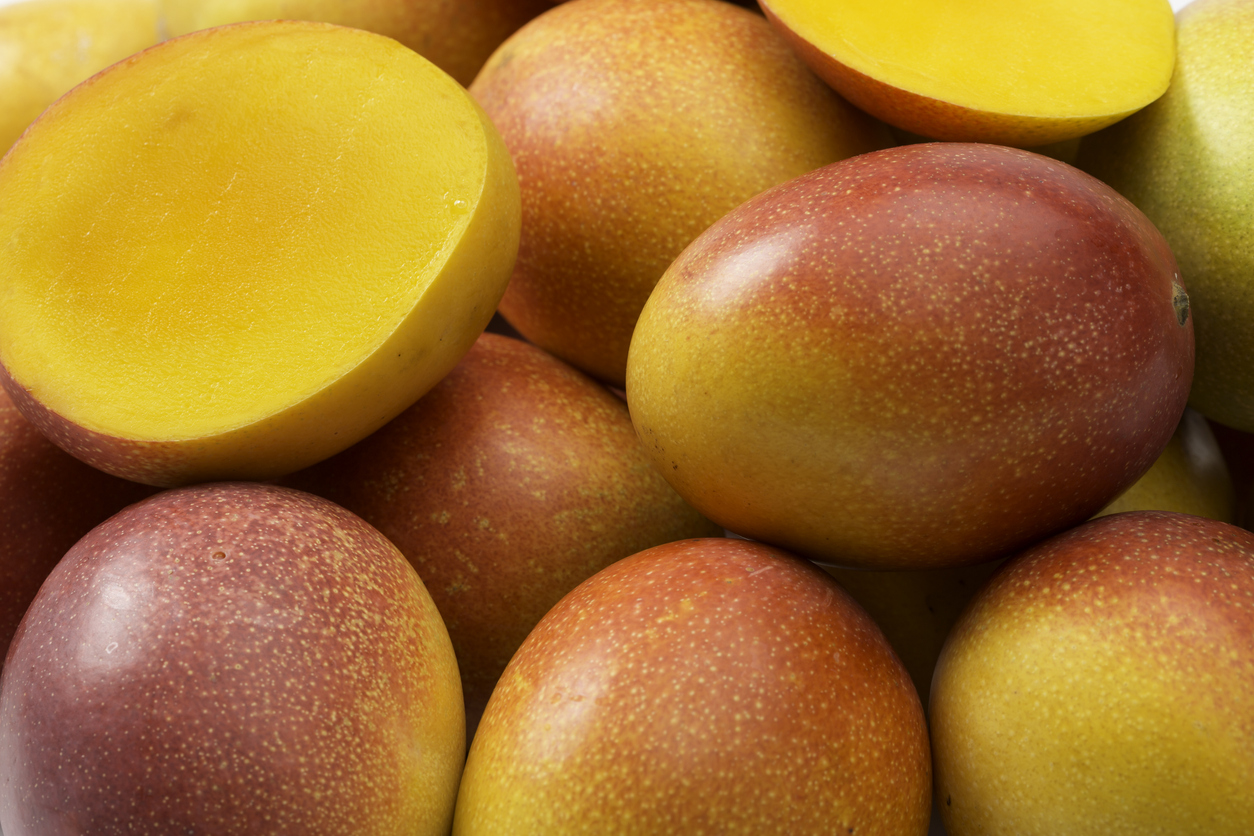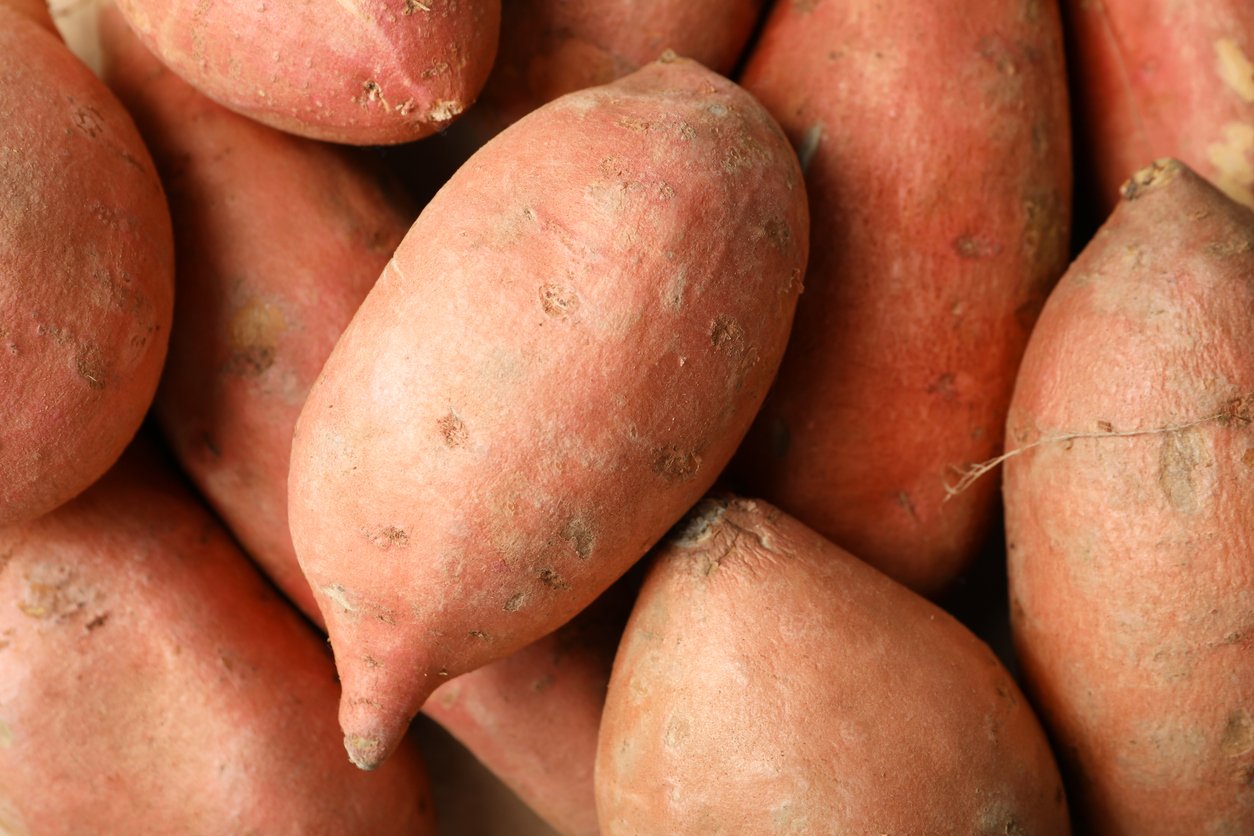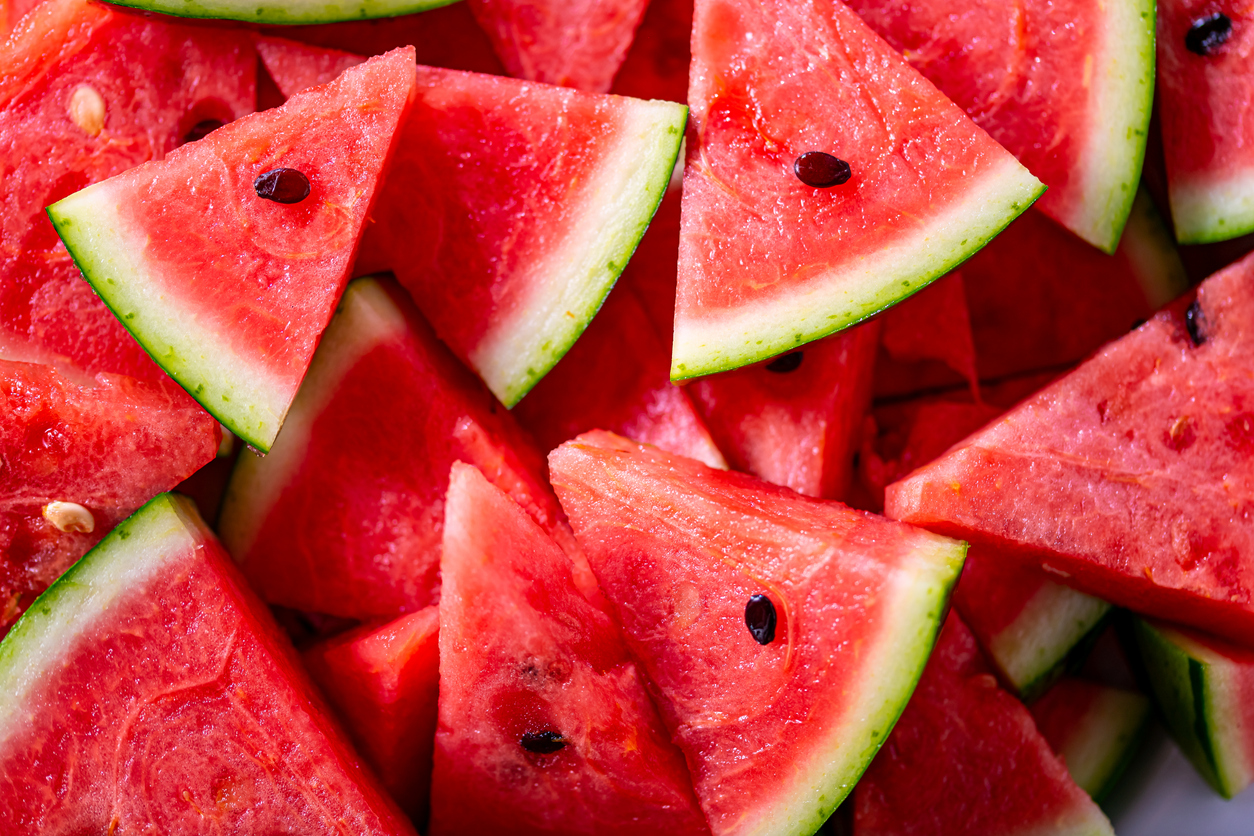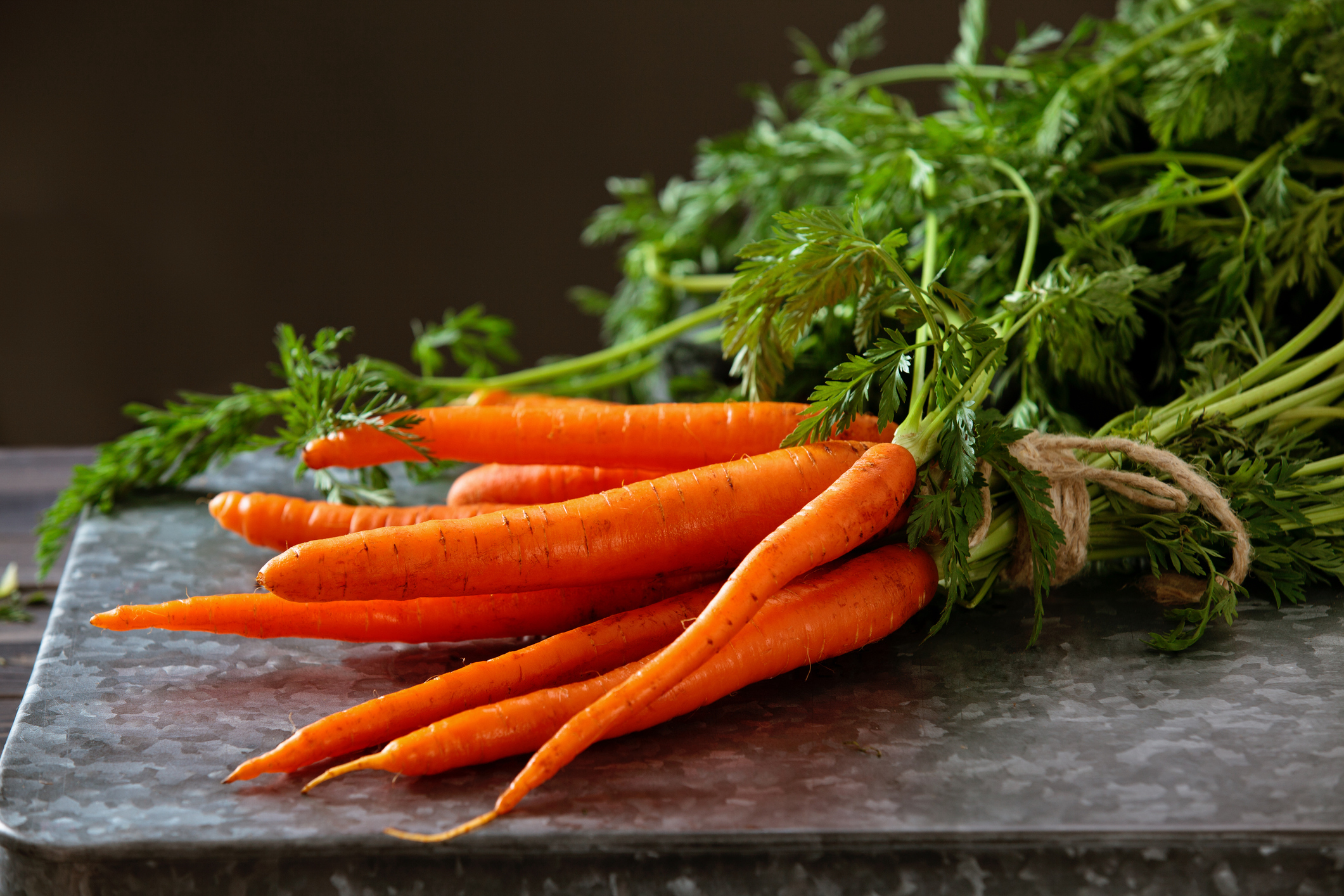The agricultural industry is addicted to pesticides, and the entire world is paying the price. The US Environmental Protection Agency (EPA) reports that global pesticide use in 2012 amounted to approximately six billion pounds. Unfortunately, they haven’t published a report since then, but the number likely hasn’t improved and may have gotten worse.
While the term “pesticide” implies that these chemicals target and kill “pests,” a better name would be “biocides” (destroyers of life) because they do a lot more than poison pests.
Pesticides poison insects and pollinators; contaminate soil, water, and air; and can cause harm to farmworkers, agricultural communities, and people who eat produce sprayed with pesticides.
[Read More: Pesticides in Food: What You Should Know and Why it Matters
How common is it for US produce to have pesticide contamination? “Nearly 75% of nonorganic fresh produce sold in the US contains residues of potentially harmful pesticides,” according to the Environmental Working Group (EWG).
In this article, we’re going to review the most and least pesticide-contaminated produce, so you can make more informed fruit and vegetable purchases.
Don’t Let Pesticides Stop You from Eating Fruits & Vegetables
One thing to remember — thousands of studies, published in peer-reviewed journals, tell us clearly that eating more fruits and vegetables is good for your health. The more of these foods you eat, the longer you’re likely to live, and the less likely you are to develop most of the major chronic illnesses of our times.
Of course, in these studies, most of the fruits and vegetables were grown commercially, and many were contaminated with pesticides. So as you read about pesticide contamination of fruits and vegetables, please use this guidance as intended — to help you figure out which foods are most important to buy organic. If you can’t afford or access organic produce, don’t let that stop you from eating fruits and veggies. Remember, if you’re choosing between an organic donut and nonorganic kale… go for the kale. Just please wash it well if you can. (Here’s our article on how to wash pesticides off produce, if you’d like some guidance.)
Who Tests for Pesticide Residue?
For this article, we’re relying on two organizations for the data on which fruits and vegetables tend to be the dirtiest and cleanest. The best known of these groups is EWG, which has published its Shopper’s Guide to Pesticides in Produce annually since 2004. Their produce guide identifies the least and most pesticide-contaminated produce — also known as their Clean Fifteen and Dirty Dozen — based on thousands of tests conducted by both the USDA and the FDA. In carrying out these tests, the produce is made “plate-ready” — washed, peeled, and ready to eat — before being analyzed. So the residues found in these studies are likely to be the same as those you’re exposed to when you eat conventionally grown fruits and veggies.
In 2020, Consumer Reports (CR) also released a pesticides in produce report based on USDA data. CR came up with their own ratings (which not surprisingly look a lot like the ones they bestow on clothes dryers and new cars), by running the USDA numbers through several filters. These include the total number of pesticides; the level of pesticides on fruits and vegetables; the frequency with which they were detected; and their toxicity. CR factors in the pesticide’s Food Quality Safety Factor (FQPA), which is published by the Environmental Protection Agency (EPA) to avoid underestimating potential harms.
The CR findings overlap significantly with those of EWG. But unlike EWG, CR makes distinctions between US-grown and imported foods, as well as conventional and organic.
Below, I summarize EWG’s Dirty Dozen and Clean Fifteen. Bear in mind as you go through the list that they are looking exclusively at conventionally grown produce, not organic. And, of course, your best choice will almost always be homegrown food, since you can control the methods used to nourish and protect your crops.
[Read More: Starting a Food Garden: How Growing Your Own Vegetables Can Ease Food Supply Anxiety & Support Health]
If you can’t grow any or all of your own produce, and you can’t afford universally organic produce or can’t access it in your community, this shopper’s guide can help you make wise consumer choices. Use it when you shop, whether at the grocery store, farmers market, or wherever you buy fresh produce, to help you determine which foods to buy organic.
Rating Disclaimer:
One more thing before we dive in — this guide looks at pesticide residues only at the consumer level. In some cases, the ratings might be very different if the researchers factored in the pesticide exposure of farmworkers and communities where the crops are grown.
For example, conventional imported bananas are rated “very good” by CR (because the peel provides pesticide protection for the fruit). But public health research shows that farmworkers exposed to the pesticides used on conventional bananas develop up to 80% more genetic anomalies (i.e., potentially cancer-causing mutations) than those who work in organic or “ecological” farms that do not use conventional pesticides.
I am not aware of any convenient database or app to help you prioritize food choices to protect farmworkers. If this is important to you (and it certainly is to me), my recommendation is to choose organic when you can — and especially so with foods that are imported from countries that have lax pesticide and worker protection regulations.
The Dirty Dozen: The Most Pesticide-Contaminated Produce
This list comes from EWG’s Dirty Dozen list. These fruits and vegetables are the foods with the most pesticide residues and are therefore the ones that are most important to buy organic if you can.
1. Strawberries
If you want to avoid exposure to multiple noxious chemicals, including dangerous fumigants that build up in the plant tissue, the fruit, and the soil, the most important food to only buy organic is the strawberry. Most of the fresh strawberries sold in the US come from California. Data from 2015 revealed that, per acre, strawberries receive 60 times more pesticide application by weight than corn, which itself is a pesticide-intensive crop. In fact, a jaw-dropping 99% of nonorganic strawberry samples had detectable pesticide residue.
But it wasn’t just the amount — the variety and toxicity of the chemicals were also problematic. While most crops showed residues of just over 2 pesticides per sample, strawberries averaged almost 8 — with 30% at 10 or more. And some of these pesticides, according to EWG, “have been linked to cancer and reproductive damage, or… are banned in Europe.”
If you like strawberries (and a lot of us do!), you have a few options. You can grow them yourself. (It’s not that hard, and you don’t need a lot of land. Even a container on a sunny porch should do the trick). Or, if you want to buy fresh or frozen strawberries, CR recommends choosing organic when possible.
2. Spinach
If strawberries win the dubious distinction of the highest amount of pesticides, spinach holds the distinction of highest pesticide residues by weight. The biggest culprit in testing was permethrin, a neurotoxin insecticide banned in Europe that’s been linked to ADHD and various neurological impairments in children.
And speaking of bans, let’s talk about DDT for a minute. The pesticide that was banned in the US in 1972 after being indicted for multiple harms in Rachel Carson’s book Silent Spring was still shockingly found on 40% of spinach sampled by the USDA in 2016. DDT, like many other pesticides, has a nasty ability to persist in the environment — even after almost half a century.
Your best bet, aside from growing your own spinach, is buying organic spinach, according to CR. Next best is imported frozen spinach, as it’s lower in pesticides than spinach grown in the US. And it’s best to always wash fresh spinach well, as pesticide levels were higher in unwashed spinach than in the washed spinach tested by the USDA.
[Read More: Is Spinach Good for You? — & How To Prepare Spinach For Flavor and Nutrition]
3. Kale, Collards, & Mustard Greens
Given leafy greens’ (like kale) well-justified popularity as nutritional powerhouses, I’m sad to report that they’re among some of the most contaminated crops in the US. In 2017, the USDA found that almost 60% of nonorganic kale samples were contaminated with the herbicide DCPA (marketed as Dacthal), which has been banned in Europe since 2009 because of cancer risks. And in 2019, 35% of examined samples of collard and mustard greens were also contaminated with Dacthal. DCPA’s main application is to kill crabgrass, which can outcompete edible leafy greens in poor soil conditions. Rather than remedy the soil, farmers are told to keep pouring on the chemicals.
The problem here is that DCPA was identified as a possible human carcinogen by the EPA as early as 1995. The data was so alarming, the manufacturer actually petitioned the EPA in 2005 to terminate its use on a variety of crops. Unfortunately, the ag industry has ignored the science and continues to douse our leafy greens in it. In the US, the only kale, collards, and mustard greens deemed generally free from DCPA are those grown organically.
[Read More: Leafy Greens: How to Source, Wash, Store, & Prepare Them]
4. Peaches
EWG and CR agree that fresh, nonorganic peaches are among the foods with the most pesticides in the US. Samples examined by the USDA found residues of 56 separate pesticides, with fungicides making up the majority of the chemicals. Fludioxonil, a seed-targeted fungicide, was on nearly 90% of all samples tested, with some even exceeding maximum allowable amounts.
Peaches also have residues of multiple neonicotinoids (also known as neonics — as if it were an affectionate nickname, which they really don’t deserve). Neonics are insecticides that attack an insect’s nervous system and may be responsible for mass pollinator die-offs. Some neonics may also harm wildlife as well as human health. According to one 2020 study, neonic exposure may cause “chronic health effects ranging from acute respiratory, cardiovascular, and neurological symptoms to oxidative genetic damage and birth defects.”
If possible, stick to organic peaches. CR also reported that nonorganic, canned peaches are low in pesticides and received an “excellent” rating. While we don’t typically recommend canned fruit, if you do choose to buy canned peaches, look for those in organic fruit juice instead of syrup.
5. Pears
Pears moved up on the Dirty Dozen this year, from number 10 to number 5, due to most pear samples showing contamination from at least five different pesticides. Four out of 10 samples of nonorganic pears were found to have residue of pyrimethanil, a fungicide shown to cause multi-organ failure and endocrine disruption in tree frogs. The USDA also classifies it as a Group C (potential) carcinogen.
A quarter of pear samples had contamination with o-Phenylphenol, a mold growth retardant whose jocular rhyming name belies its nasty effects. It’s a known carcinogen, suspected hormone disruptor, and developmental toxin.
When buying fresh pears, choose organic if possible. Both domestic and imported pear samples were rated “excellent” by CR.
6. Nectarines
Named after the divine drink of the Olympian gods, it’s a cruel irony that these delicious fruits are often fouled by pesticide residues. The USDA found 33 pesticide residues in nectarine samples, including 5 known or probable carcinogens, 17 suspected hormone disruptors, and 6 developmental or reproductive toxins. Oh, and if that’s not bad enough, they were also found to contain 10 chemicals toxic to honeybees, our most important and most endangered pollinators.
The good news is, organic nectarines are low in pesticides, according to CR’s data.
7. Apples
At first blush, apples look pretty good. They’re treated with fewer pesticides than many other crops, averaging a little over four pesticide residues per sample. And they aren’t heavily treated while growing. The problem occurs after harvest when conventional apples are bathed in a chemical named diphenylamine, which keeps their skins pretty while they’re in cold storage. American regulators decided that diphenylamine didn’t pose any unacceptable risks — in contrast to European officials, who were swayed by evidence that by-products of diphenylamine may contribute to cancers of the stomach and esophagus. For this reason, conventional American-grown apples are banned in Europe.
Some bioengineered apples have also been introduced for cosmetic rather than functional reasons. Arctic apples, for example, are spliced with genes that prevent the flesh from browning when cut open. This doesn’t stop them from degrading, mind you — it just keeps the color white. (To avoid this dreaded condition, you can either eat them once cut, soak them in diluted lemon juice, or just be okay with apples that turn brown when their cut skin is exposed to the air.) Since BEs (GMOs) are viewed by some as a giant uncontrolled experiment in overriding the laws of nature — and there’s some reason to be at least a little skeptical about industry claims of safety — there are reasons you may want to avoid these so-called “Franken-apples.”
Your best bets when it comes to apples are homegrown (a well-tended apple tree can last up to five generations) or organic and non-GMO varieties.
[Read More: Apple Facts You Need To Know About: Benefits, Concerns, & the Best Ways to Enjoy Them]
8. Grapes
EWG tells us that nonorganic grapes are loaded with pesticide residues, including 8 cancer causers, 17 suspected hormone disruptors, 10 neurotoxins, and 4 developmental or reproductive toxins. Plus, they’re often treated with 19 pesticides that are toxic to honeybees.
The only good thing you can say about nonorganic grapes is that they’re better than nonorganic raisins. According to EWG, almost 100% of samples of nonorganic raisins contained residues from two or more pesticides.
In a discrepancy that I can’t quite resolve, CR rates domestic, nonorganic grapes as very good, and imported ones as good. I hope they’ll publish the data behind their findings, as well as details of their methodology, so the public will be able to make grape decisions with more confidence. To be safe, my recommendation is to buy organic grapes and raisins.
Sadly, wines — and vinegars like red wine or balsamic — are also subject to potentially harmful doses of pesticides. Roundup is commonly used in nonorganic vineyards, at more than a pound and a half per acre, as are various other fumigants, herbicides, and pesticides. Pesticide residues found in wine rival those found in raw grapes, indicating that the wine-making process isn’t protective. These are good reasons to opt for wines made from organically grown grapes, if you choose to drink wine at all.
[Read More: Alcohol: Its Effects, Risks, Uses, & Potential Benefits]
9. Bell & Hot Peppers
Overall, peppers had the most types of pesticides detected — a whopping 115 in total. Two pesticides, in particular, showed up more often than not among tested bell and hot pepper samples. Acephate and chlorpyrifos are organophosphate insecticides that attack the acetylcholinesterase enzyme in insects and mammals. This enzyme helps convert the neurotransmitter acetylcholine into acetic acid and choline compounds in the body.
Insecticides like acephate and chlorpyrifos are especially harmful to children’s developing brains and can cause nervous system problems and other unpleasant side effects. Although they’re banned in the EU, the US has not taken steps towards an outright ban on these toxic chemicals, which sadly still end up in our food supply.
To avoid potential exposure to any of the 115 potential pesticides found on bell and hot peppers, you might want to purchase organic as much as possible — or grow your own.
[Read More: Sweet & Hot Pepper Benefits and Uses You Need to Know About]
10. Cherries
Almost half of the cherries sampled by the USDA contained residues of bifenthrin, a neurotoxin that kills insects by paralysis. It’s moderately harmful to mammals (including humans) and can wreak havoc on fish and their marine ecosystems. It also appears to cause cancer in mice but not rats, so we really don’t know what that says about carcinogenesis in humans. (Our view on the use of animals in medical research is here.) But add to this chemical the residues of 42 others found on cherries by USDA testing, and you have a recipe for individual and environmental concern.
Aside from homegrown cherries, your best bets here are frozen, domestic, organic cherries. Even imported fresh organic cherries were rated only “fair” by CR, based on suspicions of inadequate oversight of organic standards by countries such as Turkey and China. Fresh organic cherries could be a solid choice, too, if you have access to them.
[Read More: Top Health Benefits of Cherries & How to Enjoy Them]
11. Blueberries
Blueberries are back on the Dirty Dozen list after remaining off it for several years. Unfortunately, they gained a spot back due to an increase in pesticide residues on tested samples, with over 90% showing detectable levels. The amount and variety of pesticides found also increased from 2014. Over 80% of samples show 2 or more pesticides with over 17 different pesticides represented across blueberry crops.
Although they’re only in less than 10% of samples, two organophosphate insecticides showed up on blueberries: phosmet and malathion. The former is banned in the EU, and the latter only approved for US greenhouse usage. But somehow, both have remained in regular circulation among conventionally grown blueberry crops. This is concerning, as both can damage the human nervous system. And children are especially vulnerable.
Detection of increased levels of fungicides and neonic insecticides is also very troubling, especially since the fungicide boscalid may have carcinogenic properties. Imported blueberries seem to have less pesticide contamination according to CR, but organic is still recommended over conventionally grown.
12. Green Beans
Green beans are new to the Dirty Dozen list this year due to the detection of several banned pesticides. In 2011, the EPA banned the use of acephate on green beans, and in 2016 reduced tolerable amounts after the banning, trying to crack down on violations. But as we can see from EWG’s findings, that wasn’t enough to stop acephate usage. In fact, one of the samples tested had pesticide residues equaling 500 times the allowable limit!
EU-banned pesticides detected on US green beans also included carbendazim, bifenthrin, and chlorothalonil, with the former two classified as potential human carcinogens.
In all cases, the pesticide amounts, varieties, and the number of contaminated samples all increased since 2016. Consumer Reports actually ranked fresh green beans with one of their worst scores, making them an important produce item to buy organic. Canned or frozen green beans fare slightly better as well.
[Read More: Healthy Green Bean Recipes to Enjoy All Year Round]
The Clean Fifteen: The Least Pesticide-Contaminated Produce
Now that you’ve made it through the scary part of this article, it’s time to reward yourself by discovering the 15 least pesticide-contaminated crops.
1. Avocados
Whew! Avocados topped the Clean Fifteen list as one of the most pesticide-free, conventionally grown produce items tested. Fewer than 2% of avocado samples showed any detectable pesticide residue. And the single pesticide found on avocados, imiprothrin, appears fairly benign in toxicity studies.
That said, while pesticides don’t make it into the thick-skinned avocado fruit, the pervasive spraying in the Mexican avocado industry is causing environmental damage and creating public health problems. Local residents who rely on lake water that receives runoff from the avocado fields exhibit high levels of liver and kidney problems. So if you can afford organic or US-grown avocados, they may be the most socially responsible options. Unless, of course, you are lucky enough to have an avocado tree growing in your backyard.
[Read More: Everything You Need to Know About Avocados + 15 Science-Backed Reasons to Eat These Fabulous Fruits]
2. Sweet Corn
Another hyper-clean crop, sweet corn, also contained pesticide residue in fewer than one of 50 samples. And frozen corn received a perfect score — no pesticides were found in any samples. You do want to make sure to avoid BE (GMO) sweet corn, however. While the vast majority of BE corn is from varieties for feed, oil, and grain, the agronomists at Bayer (formerly Monsanto) have introduced a BE sweet corn into the market.
To steer clear of bioengineered corn you may still want to opt for organic (or check the variety with the grower or your market produce buyer to ensure that it’s non-GMO). Other than that, pretty much any corn — organic, nonorganic, fresh, or frozen — seems to be mostly pesticide-free.
[Read More: Is Corn Healthy?]
3. Pineapple
The thick skins of pineapples appear to create an effective barrier to most pesticides. Of the six chemicals found in pineapple samples, the most common, triadimefon, appeared just under 5% of the time. Be sure to avoid the BE “pink pineapple,” which is made by Del Monte. The manufacturer proudly touts the Franken-fruit as “pinker and sweeter” than a regular pineapple — which makes me wonder: was the lack of pinkness and existing level of pineapple sweetness such a pressing problem?
Aside from saying no to pink, it seems that you’re fine with any domestic pineapple — organic or not, fresh or frozen. If opting for canned pineapple, look for some that is packed in water or organic fruit juice, not syrup.
[Read More: Is Pineapple Good for You — and the Planet?]
4. Onions
Regular onions (that is, not green onions or scallions) also made the Clean Fifteen, whether organic or not. Despite being bombarded with a wide variety of pesticides, the majority of them are in the outer layers and skin, which are typically removed as you peel the onion.
So as long as you peel your onions properly, your pesticide exposure will be minimal. You can still choose organic onions to protect farmworkers. But for your own consumption, any domestic onions that you peel will likely have little if any pesticide residue on the edible part.
[Read More: Amazing Alliums — Why These Disease-Fighting Veggies Are Worth Eating Every Day!]
5. Papaya
Papayas contain very few pesticide residues. But you may want to pay attention to whether they’re BE. Most papayas grown in the US are from Hawaii and, unfortunately for fans of mother nature, 75% of Hawaiian papayas are bioengineered.
Originally, BE papayas were introduced on the Big Island of Hawaii to combat a virus that attacked the trees. When consumers began worrying about the safety of bioengineered foods and started demanding non-BE papayas, growers discovered that the bioengineered strains had cross-pollinated with and contaminated the non-BE strains. So if you want non-BE papayas, stick to organic, choose varieties that haven’t been genetically modified (such as Solo), or purchase imported fruit. Mexican papayas, for example, often don’t taste as sweet as the Hawaiian varieties but are usually more affordable — and they are not bioengineered.
6. Sweet Peas (frozen)
Even if you’re not going to use them exclusively as an ice pack, you can feel safe eating just about any variety of frozen peas — organic and nonorganic, domestic, and imported. Of the seven pesticides found on frozen peas, only one, dimethoate, appears in more than 4% of samples. And even that pesticide, which attacks insects’ nervous systems and kills them on contact, was found in only one out of eight samples, as it tends to degrade rapidly once applied.
[Read More: Are Peas Good for You? — What You Need to Know About Peas]
7. Asparagus
Those happy green spears that have such an interesting effect on our pee are pretty clean even when conventionally grown. Of the nine pesticides found on asparagus, the really nasty ones appeared on less than 1% of samples tested. Any domestic asparagus is a fine choice, although imported varieties may have more contamination. Washing your asparagus with a solution of water and baking soda will help to ensure you get rid of any minor residues.
8. Honeydew Melon
Honeydew growers, in California at least, have largely committed to reduced and strategic pesticide use in a system known as IPM (integrated pest management). This method sometimes includes pesticides, but quite judiciously. And it features many farming practices that reduce pest pressure, such as planting in raised beds to improve drainage and minimize root diseases, killing weeds with flame rather than chemicals, and replacing sprinklers with drip irrigation.
While the USDA doesn’t test honeydews, the FDA’s pesticide data shows about 45% of honeydew samples tested were without pesticides. Luckily, honeydews have a tough outer shell. And like other thick-skinned fruits and vegetables, it’s unlikely that the inner, edible flesh would have pesticides.
9. Kiwifruit
Despite “Kiwi” being the nickname for folks from New Zealand, the kiwifruit is also grown in the US. If your main concern is your own health, domestic kiwifruits are relatively safe.
CR rated kiwifruit as “good,” which isn’t exactly a resounding vote of confidence. Their middle-of-the-road rating may be because they’re among the fruits known to have residues of the fungicide fludioxonil, which may have hormone-disrupting effects. But as long as you don’t eat the skin of the kiwi, you’ll likely be fine. However, your best bet all around is to choose organic if you can. And that becomes all the more important if you choose to eat the skin (as many people do).
10. Cabbage
It’s good to know that despite nonorganic kale’s dreadful rating as a source of pesticides, some members of the cruciferous clan can still put on a good show without an organic certification. Of the seven most common pesticides found in cabbage by the USDA, only methomyl and flonicamid are known to be associated with health issues. And they appear in 1.3% and 0.8% of tested samples, respectively.
Both domestic and imported cabbage (from Mexico or Canada) are deemed acceptable by CR.
[Read More: Is Cabbage Good for Your Health? And How Can You Make Cabbage Taste Good?]
11. Mushrooms
By far the most common pesticide used on mushrooms, thiabendazole, is also a pharmaceutical routinely prescribed for humans to treat pinworm and hookworm infections, among others. I’m not suggesting going on a mushroom binge if you get diagnosed with a worm infection. Just letting you know that, as far as pesticides go, it’s not considered an especially harmful substance (unless you happen to be a pinworm!).
Mushrooms are kind of fun to grow, especially if you start with a kit that has everything you need. While organic is generally best, you can pretty safely choose any fresh domestic mushroom, organic or not.
[Read More: The Power of Mushrooms: Nutrition, Benefits, & Risks of Edible Mushrooms]
12. Mangoes
Mangoes were added to the Clean Fifteen list just last year. But while these tropical fruits may contain any of 11 pesticides, most are found in less than 1% of samples. The pesticide most often found on mangoes, thiabendazole, was only found, on average, 15% of the time and only in conventional fruit — either domestic or imported.
CR also rates mangoes as “very good” across the board — both conventional and organic varieties.
[Read More: Are Mangoes Good for You — and the Planet?]
13. Sweet Potatoes
Sweet potatoes are also relatively new to the Clean Fifteen list after hanging out in the Middle 19 (produce with medium pesticide contamination) for a while — along with mangoes and watermelons. According to the USDA, 19 different pesticide residues were found on conventionally produced sweet potatoes between 2016 and 2018. The vast majority of samples (although still only less than half) contained Dicloran, which is a pre- and postharvest fungicide used to prevent soft rot. If you peel your sweet potatoes, you’ll likely remove most of any pesticide residue. But if not, a good bath in a water and baking soda solution is a wise idea.
CR rated domestic conventional sweet potatoes as “very good” and organic as “excellent.”
[Read More: Are Sweet Potatoes Good for You? Everything You Need to Know]
14. Watermelons
Watermelon is another newbie to the Clean Fifteen list. Watermelons do have slightly more pesticides than other Clean Fifteen produce. And CR rates domestic watermelon as “good” and imported watermelon as “fair.” But luckily, most pesticides were only found in less than 1% of watermelon samples and only found on the outer rind of the fruit, not the flesh.
Around 10 different pesticides used on watermelons are harmful to bees and other pollinators, which are essential for watermelons to grow. But some farmers are beginning to reduce pesticides used on and near watermelon fields to save pollinators and improve yields. Although this news is heartening, you still have the option of buying organic watermelon, which is cleaner and better for pollinators.
[Read More: Is Watermelon Healthy?]
15. Carrots
Welcome to the Clean Fifteen, carrots! New for 2023, Bugs Bunny’s favorite veggie received a low to moderate pesticide score according to USDA data.
But despite its emergence on this list, carrots are not completely without scrutiny. The USDA found 34 different pesticide residues on carrot samples from 2020–2021, but more than half were found on less than 1% of samples tested. The pesticide that showed up the most was linuron, which is sprayed on newly emerging carrot plants. That said, you may want to avoid conventionally grown carrot greens for this reason, as exposure may be higher than on the carrot skin itself.
CR also gives both conventional and organic carrots an “excellent” rating.
[Read More: What’s So Great About Carrots? Exploring Their Health & Environmental Benefits]
Pesticide-Free Clean Fifteen Recipes
The Clean Fifteen make it easy to create a variety of cost-effective, delicious, and nutritious meals throughout the week. We’ve listed a few to get you started — Avocado Sweet Potato Toast for a unique and healthy way to start the day, crunchy goodness in our Carrot & Cabbage Slaw, and an umami delight with the Walnut and Lentil Stuffed Mushrooms. Here’s to staying well through clean eating!
1. Avocado Sweet Potato Toast
Beloved avocados and sweet potatoes make the Clean Fifteen list — making this unique twist on traditional avocado toast nutrient-dense sans the chemicals. Tip: Make the sweet potatoes ahead of time so this tasty and fulfilling breakfast can be assembled in minutes. Tip number two: Don’t be afraid to pile the toppings on high!
2. Carrot & Cabbage Slaw
Crunchy raw cabbage and carrots are the stars of this tasty, Asian-style slaw. It makes a lovely, light meal or side dish, or add it to salads, veggie burgers or carrot dogs as a topping, or toss it with some grilled tempeh. You can also add in some of the Clean 15 fruits for a sweeter take on this simple and refreshing recipe.
3. Walnut and Lentil Stuffed Mushrooms
The plant-based options for stuffing savory mushrooms are endless, but walnuts and lentils truly take the (plant-based) cake. They add fulfilling fats, satisfying protein, and plenty of fiber — not to mention lots of flavor — to these umami beauties that are naturally low in pesticides. Make them for the whole family as an appetizer or enjoy them solo as a meal (with a side of organic leafy greens, of course!).
Shop & Eat Smarter
I hope this article will be a useful reference whenever you shop for fresh produce. That said, I want to make one thing very clear: Even though some of the chemicals we’ve discussed are pretty alarming, please don’t make the perfect the enemy of the good. No matter what kind of produce you end up with, eating more fruits and vegetables is almost always a good thing!
And you do have means to mitigate your pesticide exposure on many fruits and vegetables by washing them thoroughly. So especially if it’s not grown organically, or in your own backyard, you may want to wash your produce.
Tell us in the comments:
- What produce (if any) do you always make sure is organic?
- Do you grow anything yourself? If so, what strategies do you use to keep pests from doing damage?
- Did you learn anything surprising in this article? If so, what?
Feature image: iStock.com/fcafotodigital
